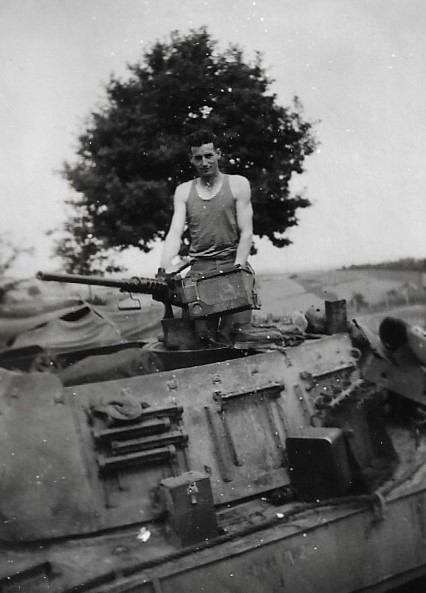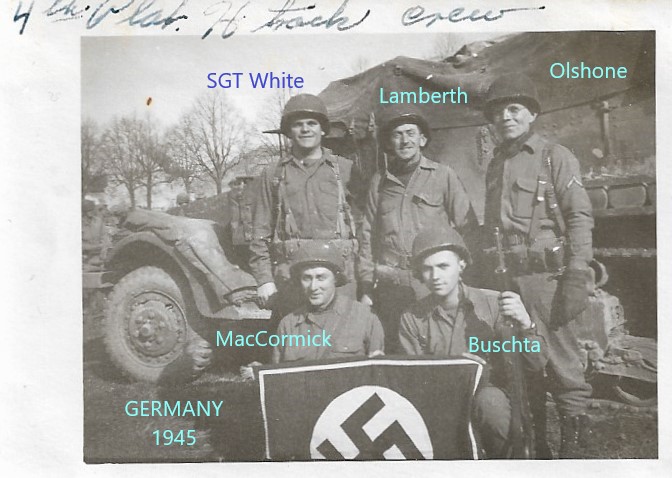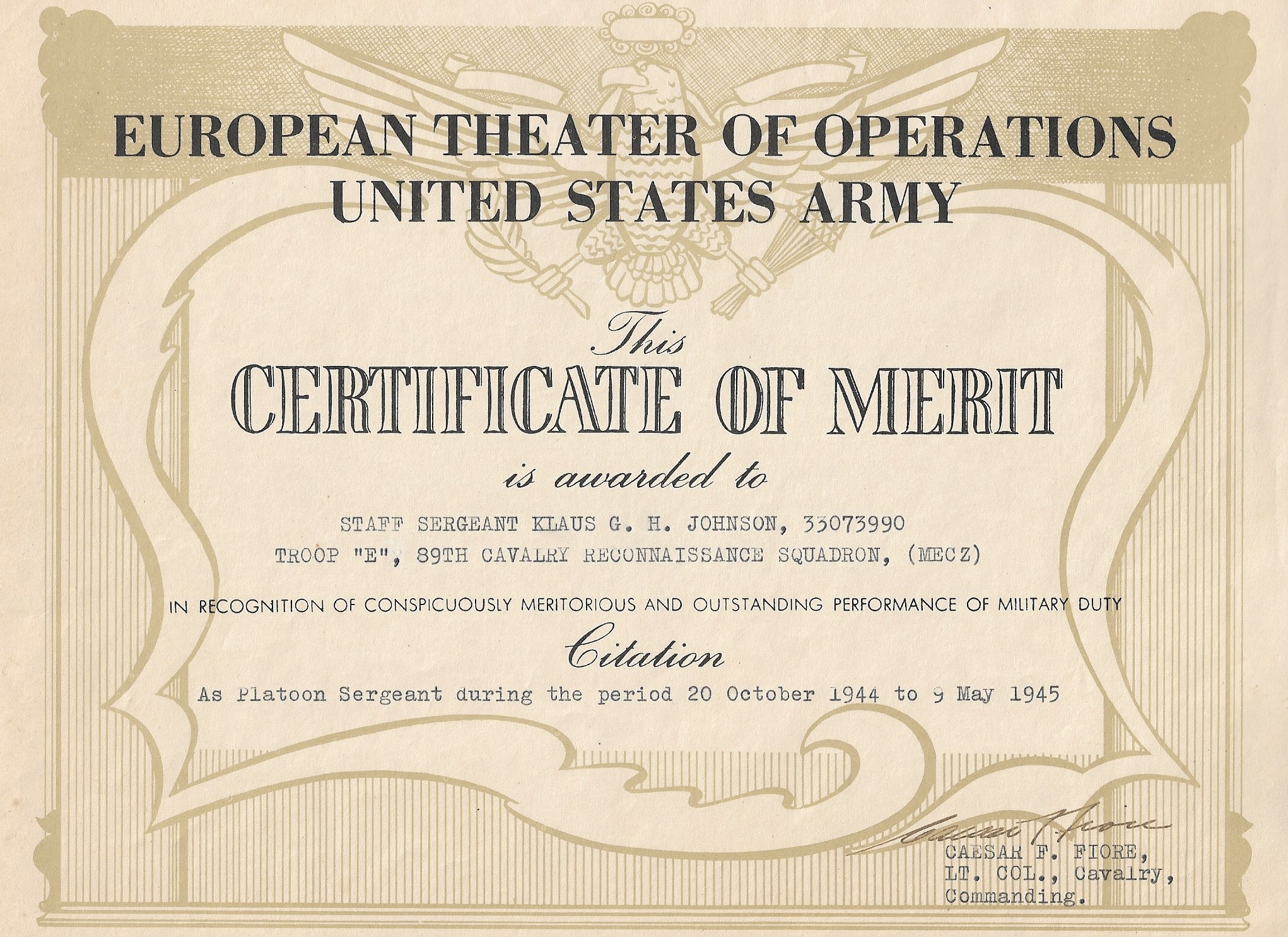WWII Captured Flags
When the victors returned from the European Theater of Operations, ETO, they brought with them the "spoils of war". otherwise known as captured items, bring backs or booty. They were among the prized possessions of the soldiers and airmen and represented a small token of their victory over the Nazis. The most valued items were pistols, daggers, medals and flags among other items.
The flags are the most intriguing especially when they are signed by the men who participated in a battle or skirmish. The signatures are most often accompanied by their home town and state of residence, sometimes thier unit is annotated as is the date and location.
The more information that is available, the better one is able to research the circumstances surrounding the capture of the flag. Sometimes the flag only contains one name, no home town or date, in which case research is extremely difficult, leading to several possibilities and no single conclusion.
In any case, these flags, although they display the symbol of Nazi Germany, clearly represent the hard-fought victory of the Allies in 1945. They are a symbol of pride for the servicemen, and they represent the final triumph of good over evil. The research opportunities provide us a chance to retell a part of our nation's military history and to affirm that good can always triumph over evil, but it takes courageous men to do so.
For those of you who are offended by the symbols on these flags, look not to that, but look at the sacrifice of those who signed these flags and understand what they did to liberate an entire continent from tyranny. This page is about them and the celebration of their VICTORY over Nazi Germany.
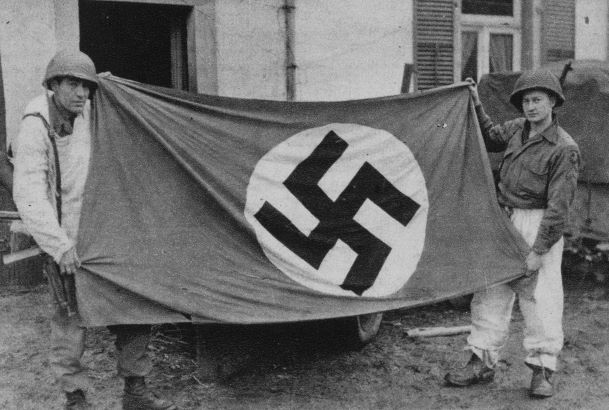
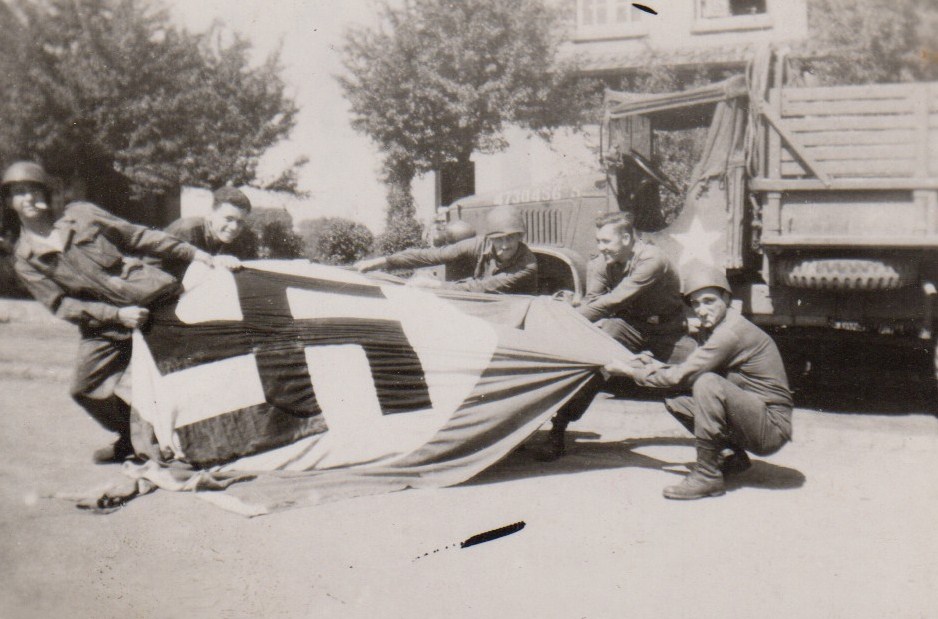
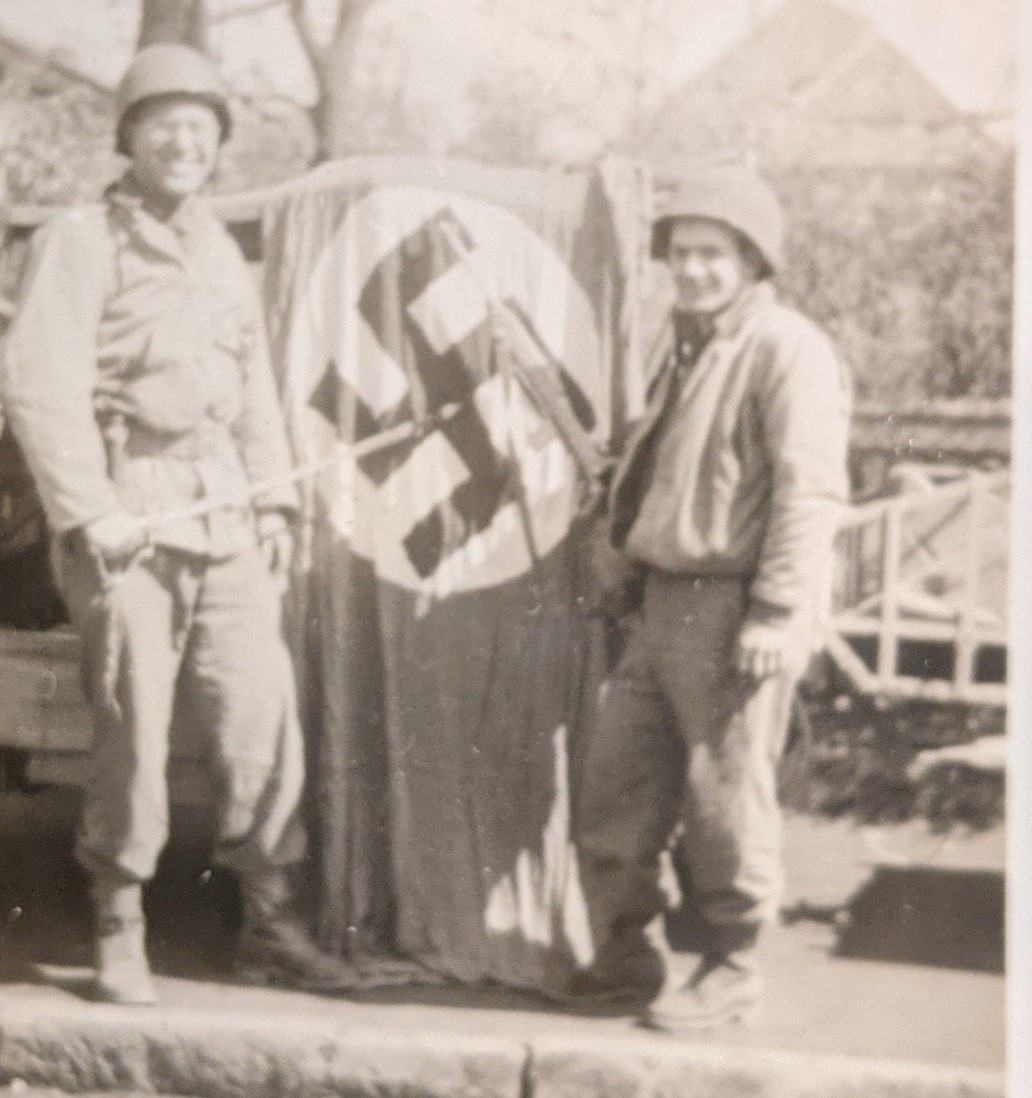
Individual Captured Flag Photos
The proliferation of cameras amonst the soldiers, sailors and airmed in the ETO was sufficient to provide an endless supply of images of the every day life of the men. Where combat images are more rare, being captured mainly by the official military photographers and the occasional war correspondent, men in combat generally did not snap images of the fighting. Their works were that of the aftermath and of daily life.
Among the cherished images are those of captured German materiel, and in this case, German flags. A survey of several images provides a view of the various types of flags used by the germans, and then captured by US forces. The Germans generally displayed the following types of flags: The Nazi PartyFlag was introduced in 1920 as the flag of the NSDAP. It consisted of a red field, with white circle, emblazoned with a black swastica rotated at a 45 degree angle. The circle was produced either centered or off-centered towards the hoist. The earlier flags were made in either two or three pieces. A red rectangle with white circle cloth sewn thereto and a black swastika sewn thereto. In many cases, the center piece was of a black printed swastika on a white circle of material sewn onto the red field. Later in the war, as material shortages progressed, flags were entirely printed and hence the reverse image depicted a reversed swastika. in 1935 it became known as the National Flag of Germany. Thereafter, numerous variations were developed for members of the Sturmabteilung, the Reichsarbeitdienst, the Hitler Jugend, and many other purposes. Flags were used on podeums, on flagpoles, as long banners displayed form windows and balconies or as vehicle identification flags tied to the backs of armored vehicles via 4 grommets.
In the images shown at right are several variations and sized of these flags as captured by American serivce members. The photos were generally taken by a crewmember or friend after a lull in the fighting. The images can be very informative and in most occasions, they provide very little forensic information. The best photos are annotated on the back wiht names, dates, unuts and locations and a brief summary of the circumstances of the photo. These iconic images capture the moments in history where the men proclaimed thier personal victory over Nazi Germany.
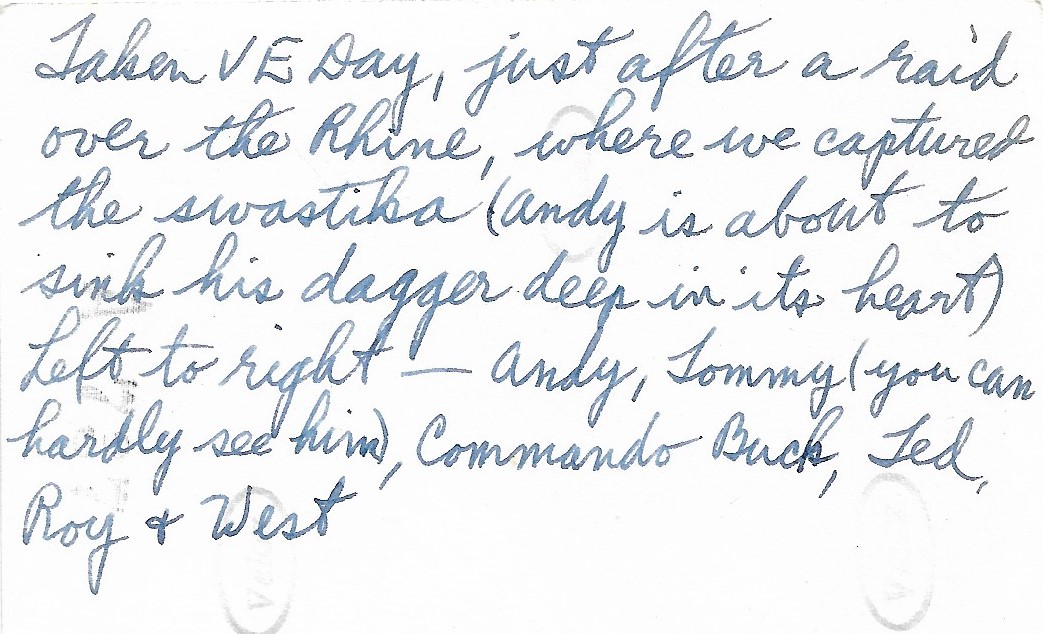
The narrative comments on the back of the image are confusing. British Commandos crossed the Rhine as prt of Operation PLUNDER on 23/24 March 1945. It could be that the photo was taken later after VE Day (7May), but the annotation, "just after" leads one to believe that they took the ohoto a few hours or days later. It seems unlikely that an RAF unit captured the flag as RAF planes did not generally land and return to England. The image shows a street sign for Kensington Gardens. There is such a street in London, so it appears that they returned to England after their raid in March and then took this image. The Dagger and nick-name of one of the men "Commando" leads one to conclude with some confidence this may have been the raid of 23/24 March 1945.
WIth the help of some new friends on the British Badge Forum, they have pinpointed the location as these red brick apartments as Beaumont Avenue, kensington Hall Gardens, London. Graham stated, "During WWII South Kensington was effectively a large RAF station: HQ P&SS was on Exhibition Road, and the Science Museum - where I used to work - housed No. 7 Radio School. Over the course of the war many thousands of airmen were billeted in the flats surrounding the museums and the Royal Albert Hall."
It is nice to finally identify the exact location.

The image above shows a large national flag displayed as a banner from a balcony. There are no street of town signs visible to identify the location in Belgium. The image is blurry and no unit patches are visible. Unfortunately not much can be discerned from the image.
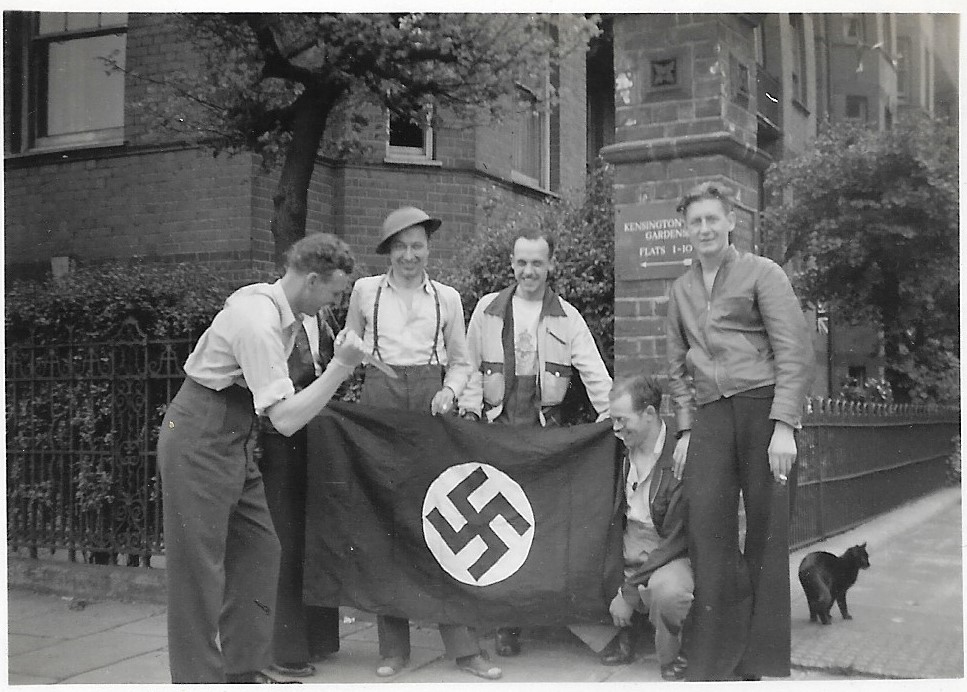
Read the caption below to learn about the circumstances of the capture of this flag by the British soldiers. Note that one of them is wearing a tee-shirt with the stencil of a British unit. One can clearly see the insignia in the center with some sort of winged emplem and the Crown of King George VI. This is a clear indication these men were part of either an RAF/RN or even a Commando unit. I compared the emblem in the center and it is a near match for the glider regiment symbol, but not exactly.
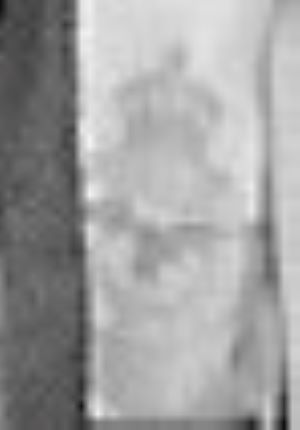
Read the caption to the left to learn about the circumstances of the capture of this flag by the British soldiers. Note that one of them is wearing a tee-shirt with the stencil of a British unit. From the responses I received ont he British Badge Forum I can safely conclude that the stencil is that of the Royal Air Force crest from WW2.
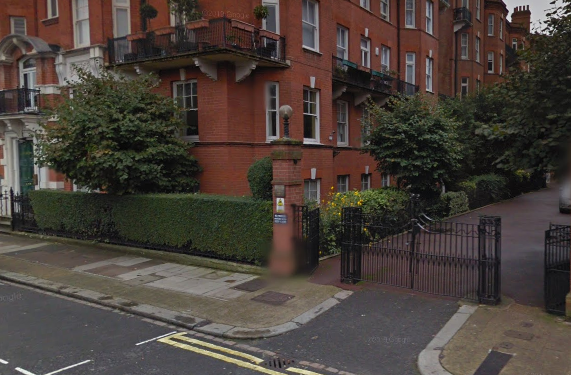
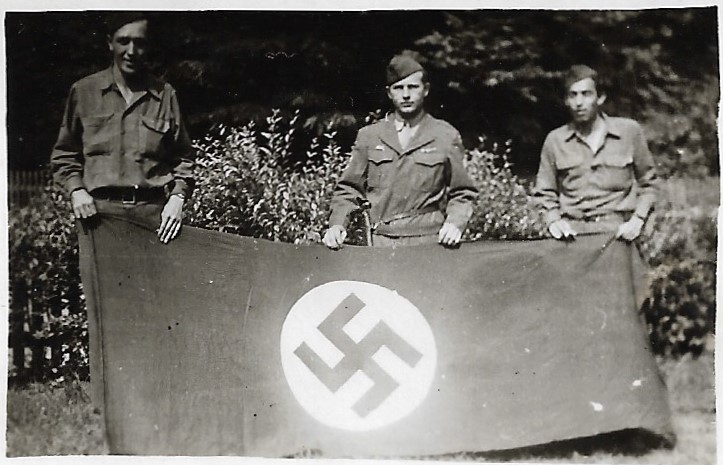
Here we see three soldiers holding a national banner. The location or circumstances are not annotated on the image. The soldier at the left is wearing a German officer's belt and buckle in place of his army web trouser belt. This was a common practice in the ETO. The man in the center is wearingan Ike jacket with unit insignia, but unfortunately it is unidentifyable. He is wearing a leather shoulder holster used to carry a .45 automatic. He has chosen to use the shoulder strap to wear it on his hip "coboy" fashion.
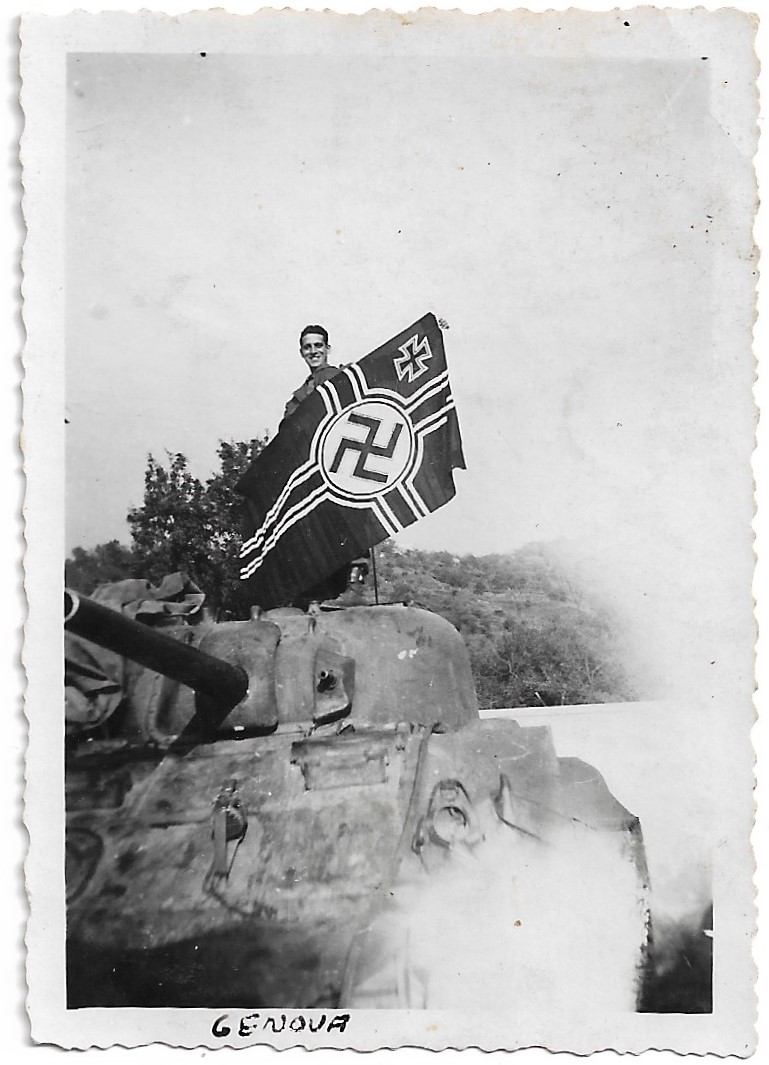
This superb image depicts a tanker atop his M3 Sherman. It is an earlier model with the smooth bore 75mm gun and appears to have aplique armor welded to the front hull. The unit ID stencil is obstructed by mud or dust. He is proudly holding a rather large German War Ensign. It is of the later war design with a smaller black ring around the swastika. THe only annotation is "GENOVA", which could either be the tankers last name, or the location being Genova (Genoa), Italy. The dryness of the surrounding terrain and type of vegetation could confirm this conclusion.
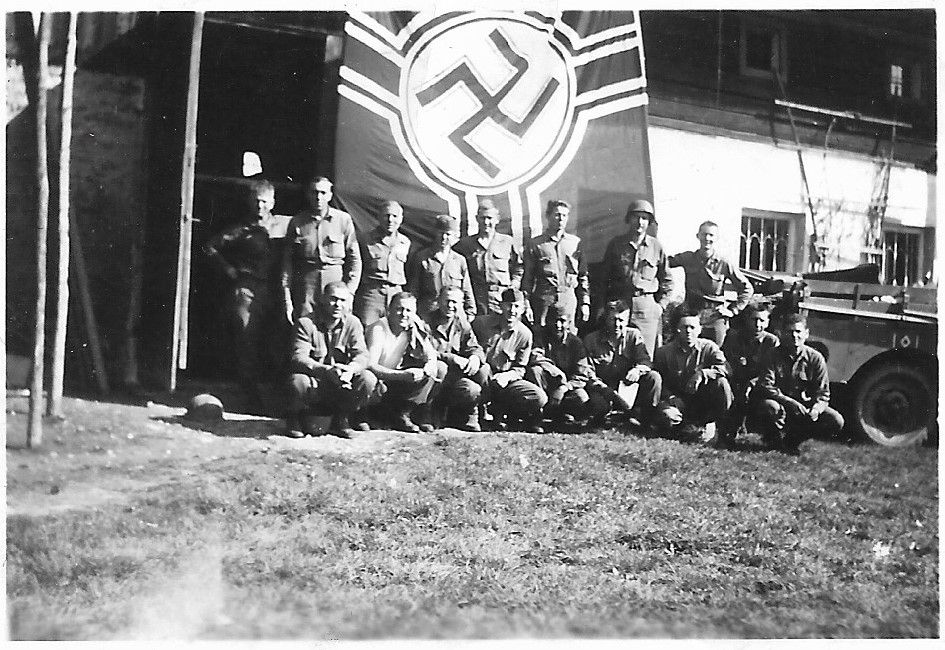
Seventeen soldiers are gathered in front of a rather large German War Ensign. The detail of the image does not allow any identification of the unit or location. There is a WC-51 3/4 ton weapons carrier in the photo. It bears a tactical symbol of a white or yellow diamond flanked left and right by a verical bar of similar color.
Anti Tank Platoon, 222nd Infantry Regiment Captured Flag
I recently acquired this large NSDAP hanging banner. What a fine research project this has been. It has 26 soldiers signatures and hometowns penned on it in a faded dark brown ink. I find the old tinted ink tends to turn a brown shade over time as the pigments, mainly the iron, begin to oxidize.
The foremost annotation states:
Anti Tank Platoon
Hq. Co. 1st Bn. 222 Inf
March 45
Germany
The 222nd was one of the Infantry Regiments of the 42nd Infantry Division that fought in the ETO during WW2. Each of its three battalions had an organic anti tank platoon with a mix of AT weapons. This particular unit was equipped with the towed 57mm AT gun pulled by a ¾ Ton Dodge WC51.
According to FM 7-35, Antitank Company, Infantry Regiment and Antitank Platoon, Infantry Battalion dated 15 March 1944, the Antitank Platoon of 1st Battalion, 222nd Infantry Regiment was composed of a command group and three squads. The command group consists of the platoon leader, the platoon sergeant and a messenger. Each squad crewed a 57mm antitank gun which was towed by a prime mover, and in the case of the 22nd, they employed the WC51. The AT Platoon was the organic AT force of the infantry battalion and its platoon leader served as the Battalion AT officer, planning and executing the battalion AT defense. Each AT Squad consisted of a squad leader, four gunners, three ammunition bearers and one truck driver for a total of nine members. The platoon therefore consisted of 27 squad members, three headquarters members for a total of 31 soldiers.
I recently acquired this large NSDAP hanging banner. What a fine research project this has been. It has 26 soldiers signatures and hometowns penned on it in a faded dark brown ink. I find the old tinted ink tends to turn a brown shade over time as the pigments, mainly the iron, begin to oxidize.
The foremost annotation states:
Anti Tank Platoon
Hq. Co. 1st Bn. 222 Inf
March 45
Germany
The 222nd was one of the Infantry Regiments of the 42nd Infantry Division that fought in the ETO during WW2. Each of its three battalions had an organic anti tank platoon with a mix of AT weapons. This particular unit was equipped with the towed 57mm AT gun pulled by a ¾ Ton Dodge WC51.
According to FM 7-35, Antitank Company, Infantry Regiment and Antitank Platoon, Infantry Battalion dated 15 March 1944, the Antitank Platoon of 1st Battalion, 222nd Infantry Regiment was composed of a command group and three squads. The command group consists of the platoon leader, the platoon sergeant and a messenger. Each squad crewed a 57mm antitank gun which was towed by a prime mover, and in the case of the 22nd, they employed the WC51. The AT Platoon was the organic AT force of the infantry battalion and its platoon leader served as the Battalion AT officer, planning and executing the battalion AT defense. Each AT Squad consisted of a squad leader, four gunners, three ammunition bearers and one truck driver for a total of nine members. The platoon therefore consisted of 27 squad members, three headquarters members for a total of 31 soldiers.
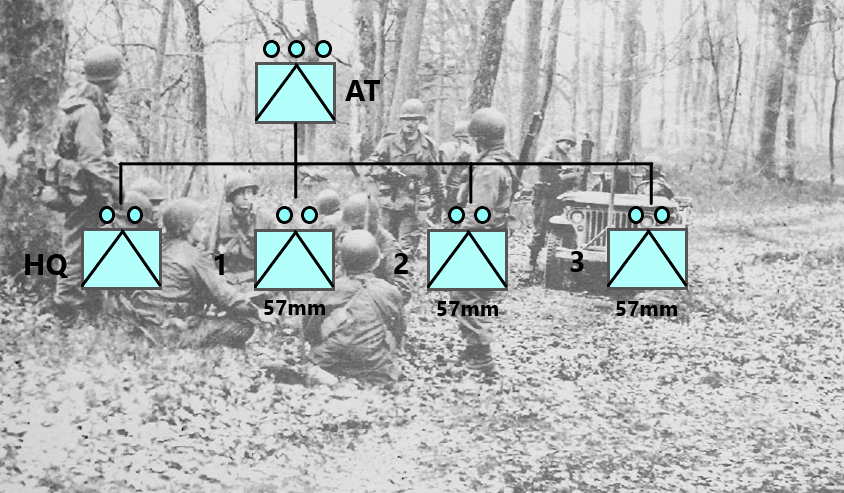
Private First Class Rethel William Flatt was a gunner in the Anti- tank platoon of the 1st Battalion and on 18 February 2014 he wrote this account of how the flag came into his possession.
German Headquarters Banner Flag, Wurzburg Germany
“It was April 3, 1945 and after chasing the German Army for the past month, fighting small battles when they needed relief from the constant pursuit, our Regiment, the 222 Infantry of the 42nd Rainbow Division, was relieved and assigned a rest period in a small town about ten miles south of Wurzburg Germany. Sometime around 6:00 pm on the same day our platoon leader told us that the Germans had decided to defend the city of Wurzburg and that our tanks were stalled and wanted infantry to cross the river ahead of them.. When we arrived at the southern side of the Main River the tanks were lined up waiting to cross. They were receiving heavy fire from the buildings on the north side of the river. The buildings were about three stories high and I believe every window contained a machine gun or 20mm cannon. We moved in front of the tanks and were positioning our truck to cross the bridge when the Germans blew it up. Shortly after the bridge was blown, the engineers moved in and proceeded to put down a Bailey Bridge that would allow the tanks to cross. In the meantime, the engineers put our truck and 57mm Anti Tank gun on a raft and we crossed the river under a hail of German Machine gun and anti aircraft 20mm fire. We followed a rifle company that crossed in row boats ahead of us; although they took heavy casualties they cleared out the buildings and forced the Germans to withdraw. The river is about ten feet below the street level and I believe that fact alone allowed us to cross without any of our ten squad members getting hit. I don't know what time it was but it had to be at least midnight when we placed our gun in a defensive position outside the German headquarters building. About two hours later, a German patrol attacked our position with about 10 to 15 soldiers and we repelled them without any casualties. The Germans retreated leaving three dead men in the street in front of our gun position. It was fairly quiet the rest of the night and we ate cookies and drank snaps while trying to stay alert. The cookies and snaps came from the German Headquarters building located on the corner where our gun was placed. There was a room in the basement just full of all kinds of wine, whiskey, brandy and snaps. By morning the Germans had vacated the center of the city and we moved out of our position and started chasing Germans again. Before leaving the defensive position we occupied all night, two of us cut down the banner flags hanging from the building. The next day I asked all of the men in our platoon, that would sign the flag, to put his name and hometown on the white part of the swastika.”
The image below is purported to be of one of the Gun Squads of the AT Platoon of 1st Bn.
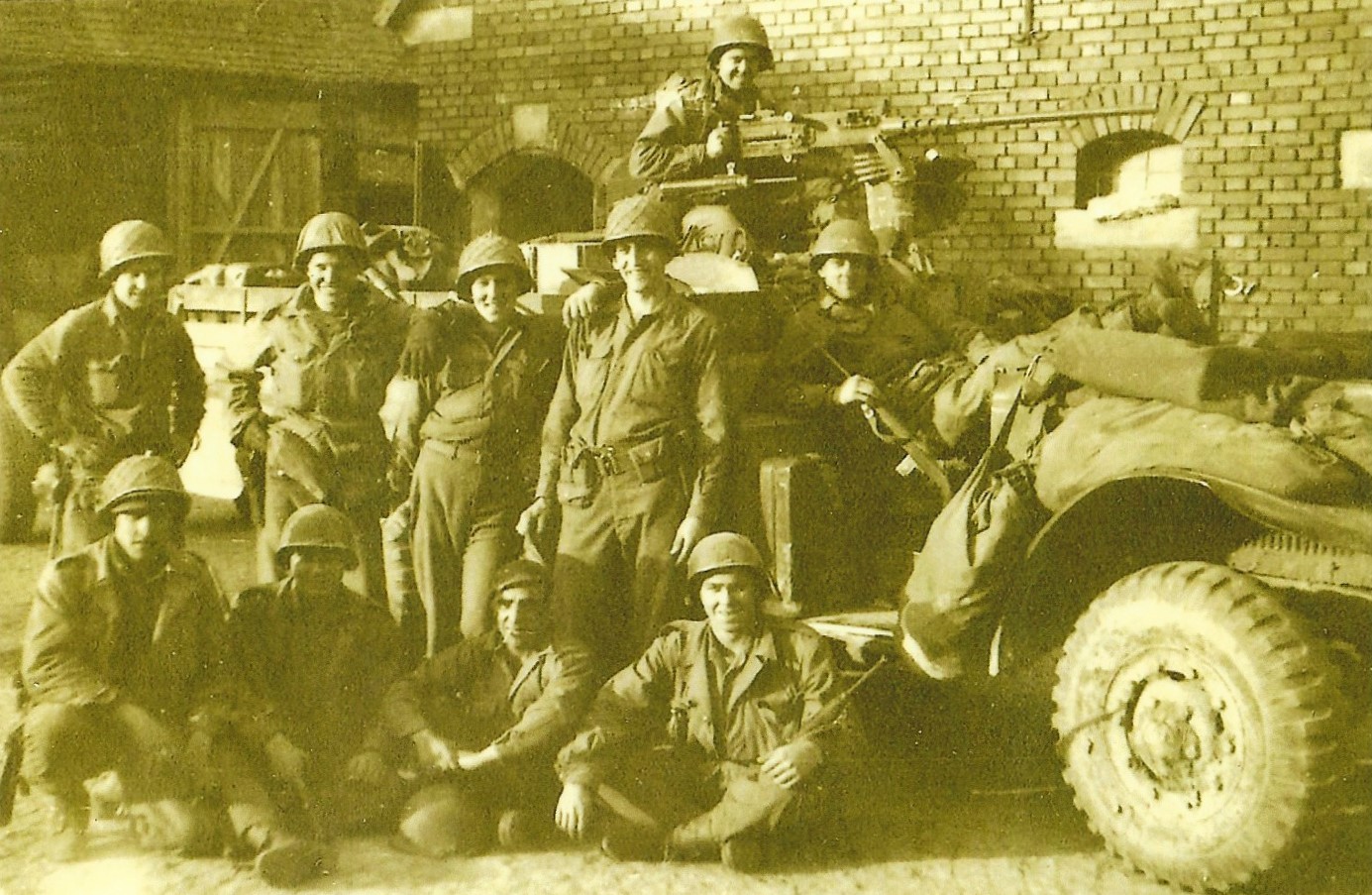
I found the following exerpt from an obituary outlining PFC Flatt's life:
“Louisville - Rethel William (Bill) Flatt, age 94... of Louisville... passed peacefully at (his) home on Monday, March 2, 2020...Bill served in the United States Army and is a Veteran of WWII, as an infantryman in the 42nd Rainbow Division, earning both the Bronze Star and Purple Heart for heroism under fire during active wartime. He was a participant in the liberation of Nazi death camps and witnessed the atrocities of communism. Bill and Virginia loved God, their country and family and instilled those values in their family.”
Here is a complete list of the 26 men who signed the flag. A few parts of signatures or home towns are illegible. No doubt this is a near complete list of the soldiers of the Anti Tank Platoon. Most did not indicate their rank, so it may be that their Platoon leader is not included in the list.
- A. E. Morlok 1210 - 10th St. Columbus Nebr.
- Anthony Rubano Bronx NY
- Q. E. Eakin Dover Arkansas
- John Chelarin Cleveland Ohio
- Vester O. Cruse Route 4 Box 505B Phoenix, Ariz
- Estill Smith R.R. #1 Copley Ohio
- Eugene Silvas, Burbank California
- C. E. Shiel, Froest St 20, Hazlehurst, Miss
- J. C. Davis, Jackson TN
- Joseph S. Letavish 406 e. 66 St. New Youk City New York (Manhattan)
- Charles K. Williams Sheffield Ala.
- Kell W. Gaskins Dyersburg Tenn.
- PFC Floyd Harris 203 Lett?? St. ?????? Iowa
- P.F.C. Richard C. L??? RT. 2 Box 71 ?????
- Wayne Stienbarger Fort Wayne Indiana
- John B. Krieter, Crown Point Indiana
- Paul Parent, Argyle Minn
- Frank Williams Crestline Ohio
- M. J. Manuel, Mason City Iowa
- Keith E. Davis Diagonal Iowa
- Clair Schwendeman, Howell Ohio
- Permanant PFC Rene C. Jacobs Long Beach Calif.
- H. H. Hicks Cookville Tennessee
- Simon B. Clifton Culver Indiana
- Roy D. Steele N. J.
- Jack Day, Anamosa Iowa
Keith E. Davis Army Service Number (ASN) 17152296 was born on September 22nd 1923 and entered service on 30 November 1942. Once must imagine Thanksgiving Dinner was an uneasy celebration for the family in Ringgold Iowa knowing that Keith was departing shortly for training and eventual overseas combat duty. A few days later he would take a bus or train from Ringgold to Des Moins where the enlistment process began. In his case he ended up in the 222nd Infantry Regimens as an AT soldier. Before deploying to the ETO, Keith married Marjorie Bently and enjoyed 66 years together. He would take part in the Battle of the Bulge and help to liberate the Nazi Concentration Camps at Dachau. He was awarded a Bronze Star for his service with the 42nd ID. Following the war he graduated from college in 1949 with a degree in civil engineering and worked for the Iowa Department of Transportation. Keith E. Davis passed away on 8 December 2010 in Ames Iowa. He was 87 years old.
Estill Smith ASN 35440724 hailed form Johnson Kentucky. He enlisted in the US Army on 10 August 1942 from Huntington West Virginia. According to Army enlistment records, he was 20 when he enlisted, he had completed grammar school and was unmarried. Before enlisting he was employed as an unskilled auto worker.
The MAP TO THE LEFT shows the realtive frames for the accompanying pictures shown below as Photo 1, 2 and 3 taken in Wurzburg in early April 1945.
The photos show the destruction caused in Wurzburg by the Allied bombing missions earlier and they dipict the commanding heights on the West Bank of the river from which the 42nd Division was able to observe the assault on the city.
The photographs were copied fromt he 42nd Infantry Divisional History that was published shortly after the end of the war. Photo 2 shows the area on the East Bank where the AT Platoon most likely set up their gun to overlook the bridgehead on 3 April.

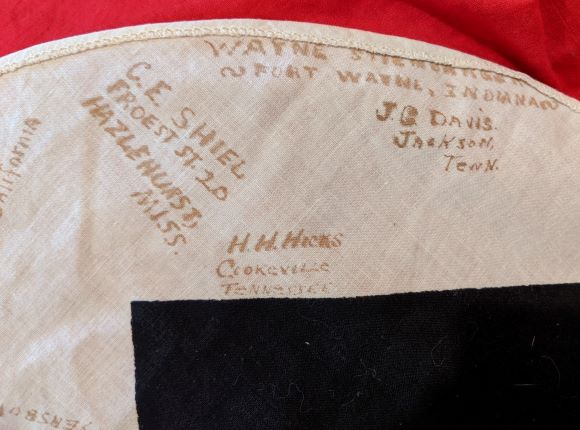
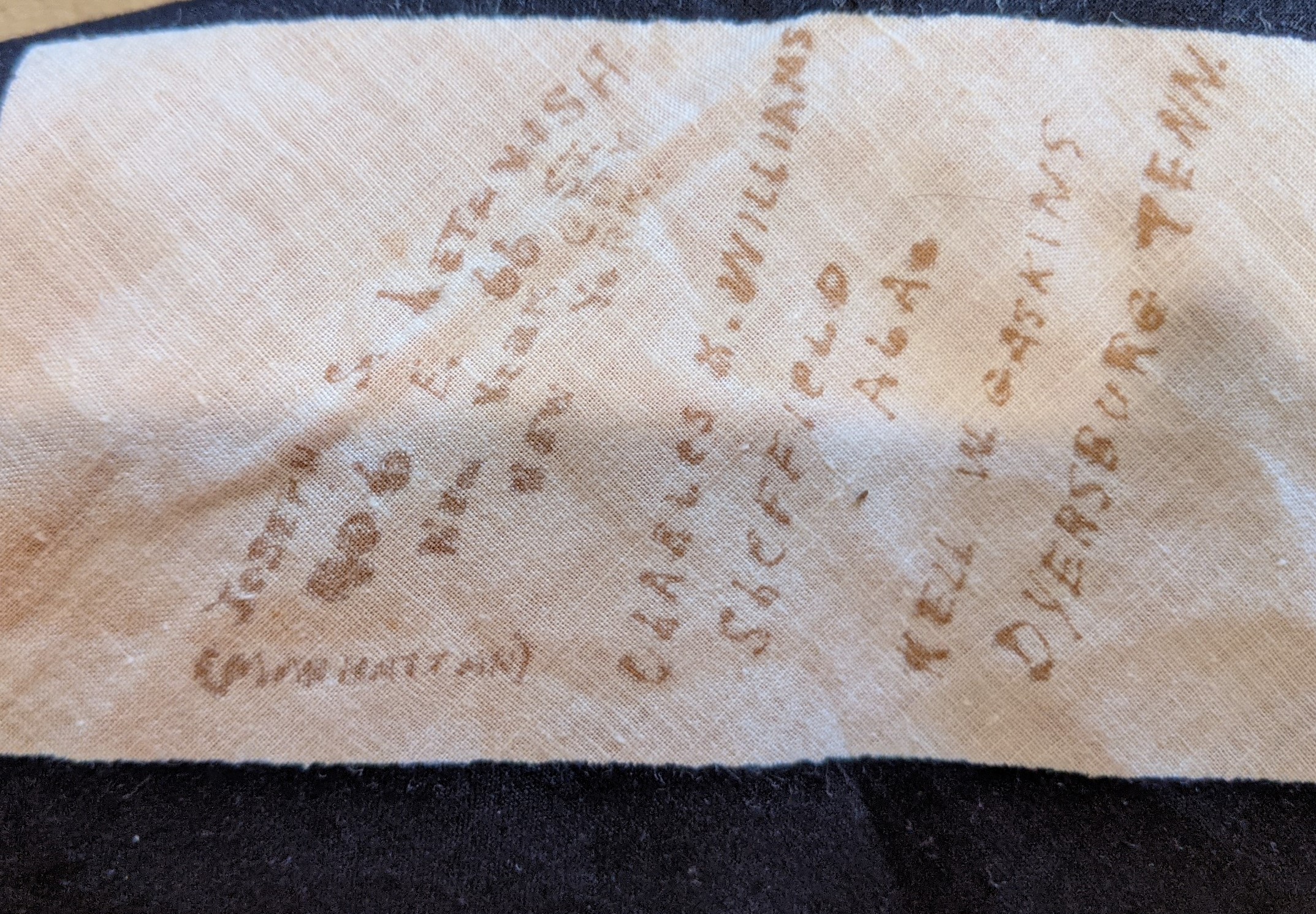
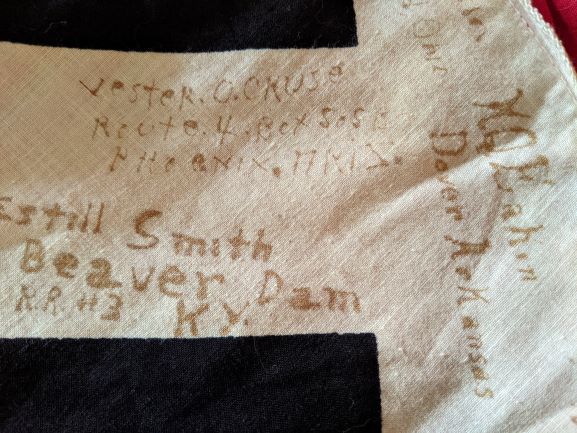



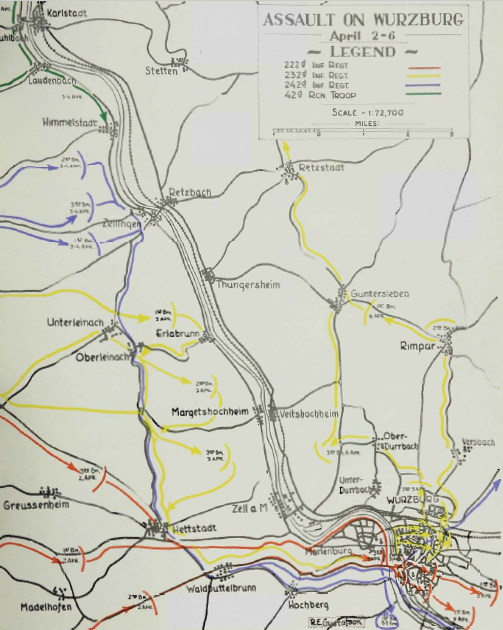
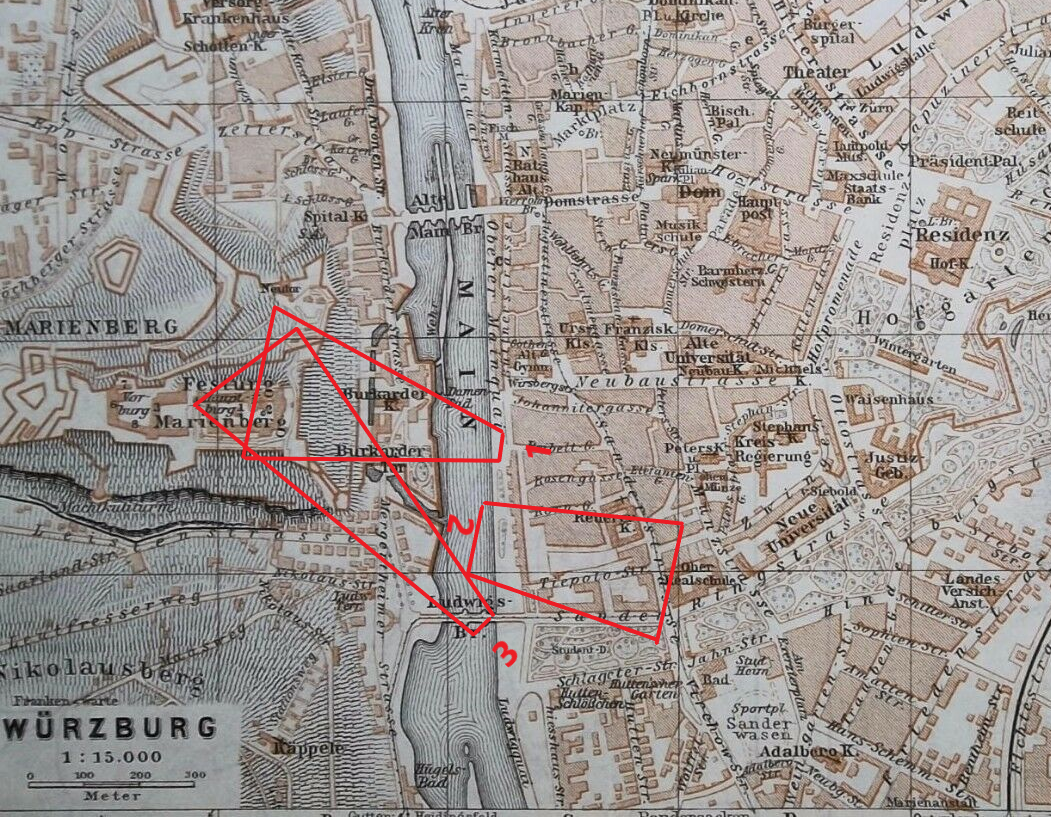
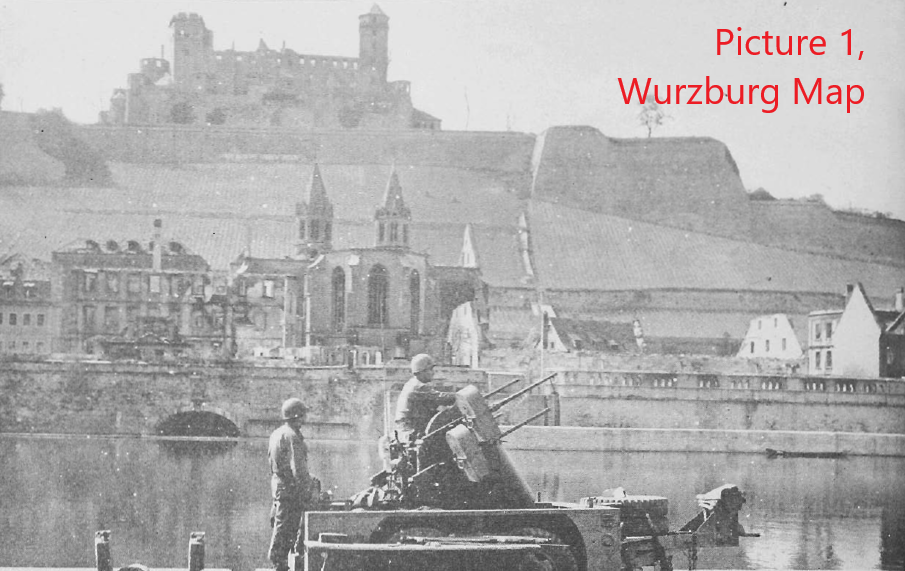
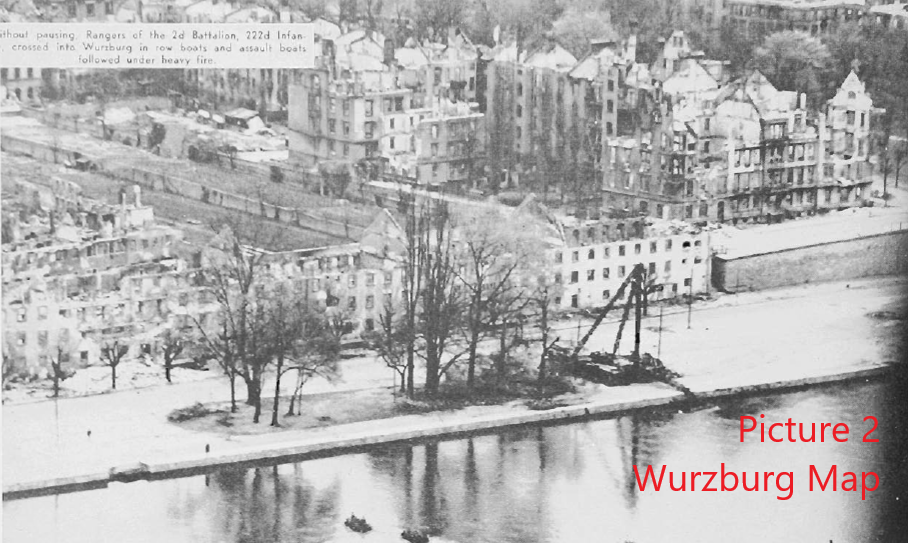

635th Tank Destroyer Battalion Captured Flag
Probably my most interesting captured flag is the is Sturm Abteilung, SA, flag that was captured by members of the 635th Tank Destroyer Battalion during a reconnaisance mission into Austria on 4 May 1945. The SA flag has 15 soldiers names and home towns along with two Austrian women's names and "Lambach Austria 6 May 45" A search of the town and date led me to the 71st ID who liberated Lambach on 5 May.
A perusal of tactical maps of the advacne of the Allies in may 1945 showed that the 71st Infantry Division entered Austria in early may near this area. I referred to the 71st ID unit history and it showed that the 635Th TD was attached to the unit during the later stages of WWII. After much research I was able to match 7 of the names to,the 635th reunion booklet from 1987.
I also found an excerpt from the 635th TD Bn After Action Report outlining the action that led Sgt Cunningham and the recon unit to Schloss Wurting where an SA Fuhrerschule (leadership school ) was headquartered. That was on 4 May. I suspect this is where the SA flag with Cunningham's name came from
The castle Wurting is several centuries old. In it's history it belonged to the Von Trapp family yes, of "The Sound of Music" fame. Here are some pics of it and a link to the history of the castle.
https://de.wikipedia.org/wiki/Schloss_W%C3%BCrting

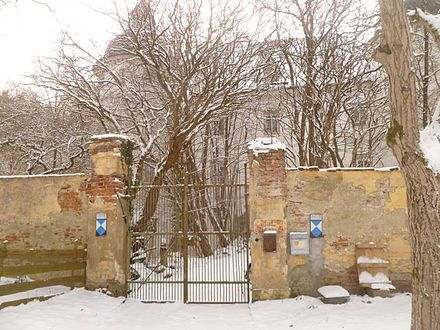
This flag comes from SA Group Donau, Standarte 84 from Baden near Vienna. Gruppe Donau was also known as Gruppe Ostmark (Austria). Several history reports confirm the castle as being the location for an SA leadership school. Further below is another image showing the SA leadership visiting the site during 1940 as posted in an SA news journal. The caption below the last image reads: "Brigade Commander Noel with the acting commanding general at Castle Wurting."


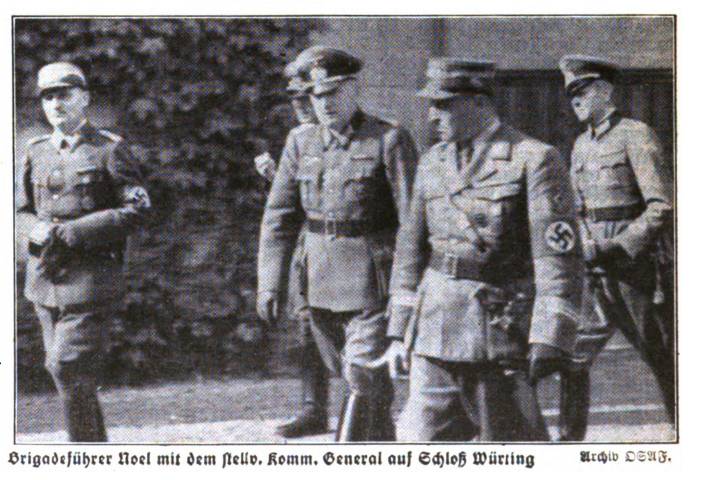
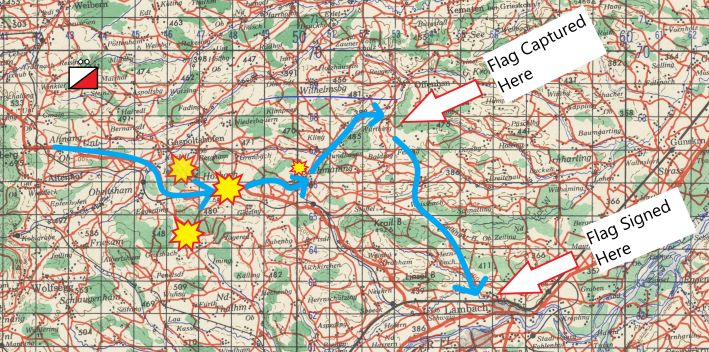
During April and May 1945 635th TD Bn was attached to the 71st Infantry Division. The 71st made their final drive into southern Germany and then into Austria linking up with the Russians and uncovering the horrors of the Nazi concentration camps. The images to the right and below come from a 71st Souvenier map detailing the exploits of the 71st.
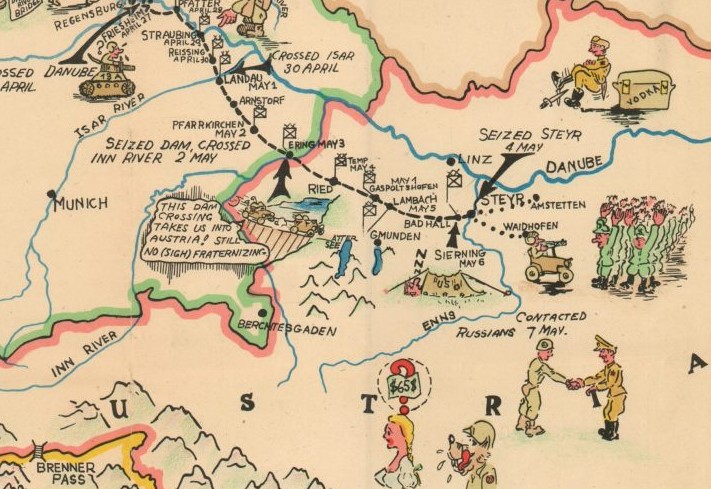





Narrative, Appendix No. 1, 635th TD Bn., 3 June 1945, cont'd
At 0800 hrs 4 May the Bn Commander sent Capt Page and quartering party consisting of 3 ¼ tons and 1 M-8 to locate and secure billets for forward and rear echelon Cps in Austria. The group infiltrated across the Inn river with instructions to follow the infantry. The party discovered at Affnag that they were well ahead of the infantry. They attached themselves to and followed a platoon of 71st Rcn Trp forward which stopped at Affnag to clean out a pocket of enemy cavalry. Our part sighted a train consisting of 4 cars and engine traveling at high speed. Our M-8 gave chase and forced the engineer to stop. It proved to be a mail and passenger train. Two enemy soldiers were taken prisoner and the mail in the baggage car confiscated. (later delivered to 71st Division G-2 by the Bn Commander). Our party then caught up with the Rcn Platoon and continued on with them. At coord 4666 the head of the column drew machine gun fire from dug in positions. Before our advance party could displace forward, the Rcn Platoon had the situation cleared ad the column again proceeded. At Horbach the column drew heavy small army fire from about 200 enemy. A task force from the 2nd Bn. 14th Inf Regt. Advanced to take the situation in hand. At the same time, Capt page sent the M-8 and one ¼ ton in charge of Sgt Hoof to cover the Infantry's right flank. At coord 465645 Sgt Hood sighted 5 enemy general purpose vehicles with soldiers trying to start the vehicles. Sgt Hood's patrol knocked out the 5 vehicles, wounded 3 enemy and took 22 POWs including one Captain. Horbach cleared by the infantry, our party left the Rcn Platoon and proceeded to Bachmanning. Adequate billets could not be located. In the outskirts of Mundhagar, our group met 4 friendly infantrymen who were outposting Bachmanning for their company. They advised Capt Page that they sighted enemy in Hundhagar but did not kno their disposition. Capt page in his ¼ ton and the M-8, and including the 4 infantrymen, entered the town and immediately drew enemy small arms fire. The remaining 2 ¼ tons then entered town and a sharp fire fight ensued. Our party kileld 2 enemy, took 120 POWs, including 20 officers, and knocked out 6 general purpose vehices and immobilized 9 more. Sgt Cunningham fired his .30 cal MG at enemy in woods coord 515675 with unknown results. The party proceeded to Schloss Wurting and took over Schloss occupied by the Nazi party as an SA Gruppenschule. The school's administrator was taken prisoner.


11 Soldiers and one Civilian who Signed a Captured Flag
This example is a small sized German vehicle identification flag. These were mass produced and tied to the roof of vehicles and turrets of tanks to identify the vehicle to Luftwaffe planes so they would not be bombed or straffed by their own airmen.
11 members of one unit, and an unknown civillian placed their names and home towns on the flag. There is no date or unit affiliation, and the lineage of from where this item came has been lost through previous transfers.
Joe Barrett, Murfreesboro, TN
James E. Arrondale, M? Hill Ga
Arthur A. Cle????
J. A. Newbill
Louie Ryder
SGT William H. Mickler, Lee FL
Bill Fuller, Portage, WI
William Wells, Marlow, OK
James Cambr??, Fall River , MA
?????? Heppler, hartford, CT
R. L. Gri?lan, Jacksonville, FL
Mr. Otto Harmening, Chicago, IL
Research using only a name and town can be extremely difficult, and in some cases impossible, particularly if the name is a common family name. This particular example has a good bit of fading to the ink, and that makes further research even harder.
I have started with the most legible and unique names and will begin providing details. Perhaps a request for the service records of one will yeild a specific unit and make this more interesting.
The first name I began with, Number 7 on the flag, is that if William H. Mickler, from Lee Florida. Lee is located between Jacksonville and Tallahasee just north of current I-10. Records show William H. H. Mickler, Army Service Number, ASN 34537208, enlisted on 22 December 1942 at Camp Blanding Florida. He was born in 1922, making him 20 years old. According to the records, he had a grammar school education and was mentored as a carpenter. He was single at the time of his enlistment. His residence is listed as Madison, FL, which is just a few miles from Lee.
At the time he penned his name on the flag, Mickler was a Sergeant. Most likely he was a squad leader, and the other 10 men comprised his squad. Given the fact he was a carpenter by trade, it might be correct to conclude he was part of an engineer unit.
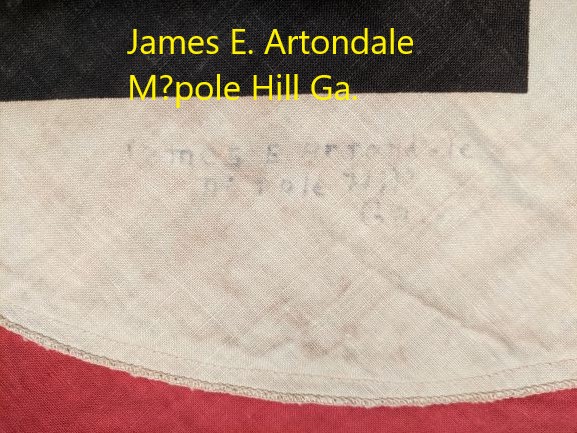

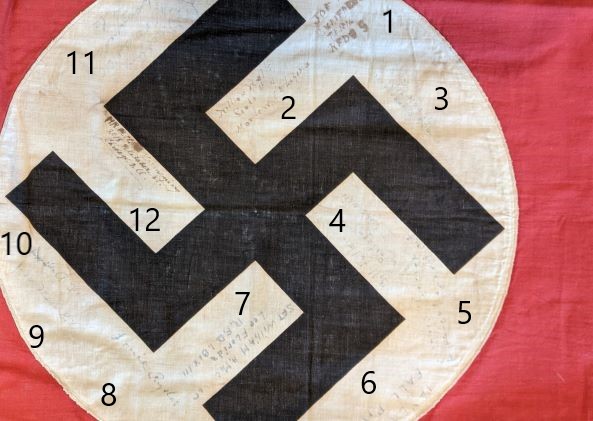


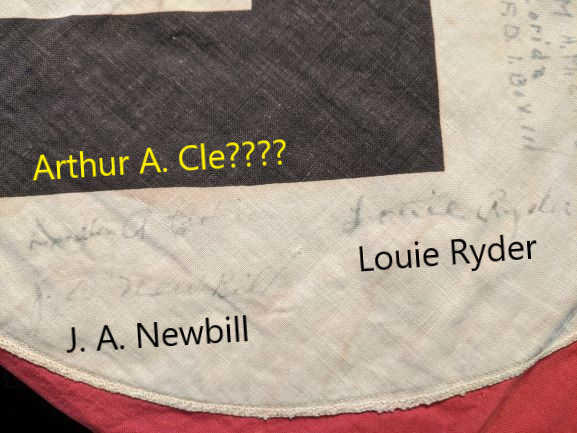
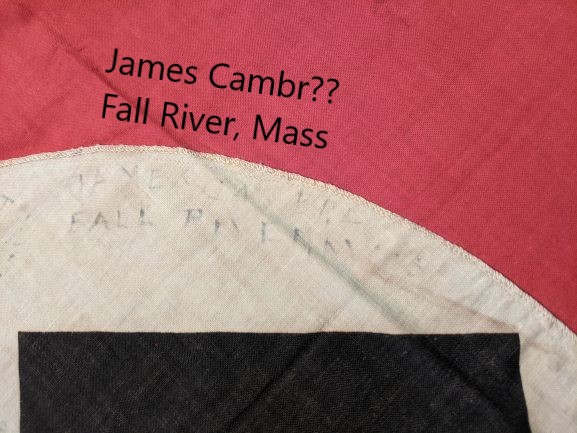
Germany. March 7, 1945
Shown here is a simple german flag. A few points of interest regarding the flag stand out. It was sold at the Kaufhaus (Purchase House) in Domstrasse (Cathedral Street) in Koln, (Cologne) Germany. Kaufhaus is the German WWII equivalent of Woolworths. It sold all sorts of housewares at reasonable prices. This was most likely not a military issued item, rather a patriotic emblem displayed by a German citizen. What is, however, interesting is that this flag bears an ink stamp in the lower left hand corner of the Amtsvorsteher als Ortspolizei or the Superintendant of the Local Police in the city.
This is not to say it for the police in the city of Cologne, but could have been one of the outlying villages or districts of Cologne.
The flag was captured by H. E. Toy on 7 March 1945. This has been a difficult project to research as the numbers of soldiers with the last name of Toy and only initials for first and middle name.
The date and relationship to the city of Cologne provide us with another perspective. In early March, 1945, the Allies launched Operation LUMBERJACK. Its goal was to seize a crossing site over the Rhine River. The fighting around Cologne began on 1 March and continnued until 7 March when Cologne was finally in Allied hands. By the evening of 7 March, three US divisions were firmly entrenched in Cologne holdng the west bank of the Rhine River, These units were the 3rd Armored Division and the 104th and 8th Infantry Division. Convievably, H. E. Toy was a member of one of these units, or their supporting/attached elements. To identify the exact soldier would require a few trips o the national archives to examine unit after action reports and unit rosters.
The map to the right shows the axis of advance for Operation LUMBERJACK and the units involved. The combined operation resulted in the capture of the nearly intact Remagen Bridge, and the city of Cologne. the Allies were now securely entrenched on the banks of the Rhine and ready to assualt Germany proper. The map is coutesy of the Center for Militry History from the Army "Green Book" series, Rhineland Campaign.

I will probably never know the true identity of the soldier named Toy, nor will I be able to confidantly say to which unit he was assigned. I can with great confidence attest to the fact that the flag came most likely from Cologne, and given the date penned thereon, I can conclude it was taken during or shortly after the capture of the city of Cologne during Operation LUMBERJACK.

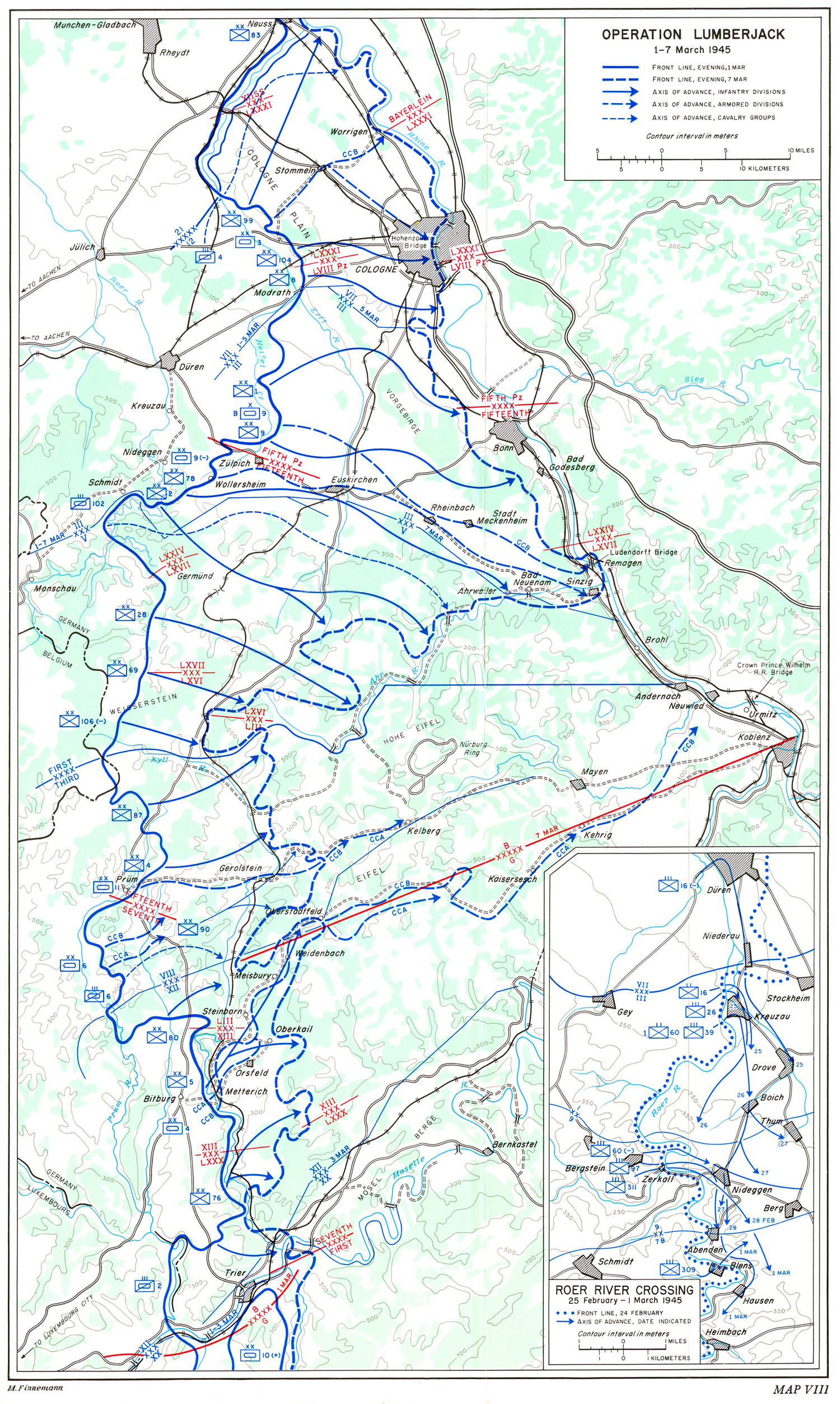
341st Engineer Regiment Captured this Flag on 31 March 1945
Here is another non-descriptive German Vehicle Identification Panel. The names penned on the white background are rather faded, and there are water stains from improper storage.
What I can reasonably determine is the following:
The flag was “captured” in Hof Germany by B. Goodman and H. Da??? of the 341st Engineer Regiment.
In the roster of the 41st, there are two B. Goodman names listed, one being; Goodman, Bernard T., 133 North Shanango Street, New Castle, Pennsylvania and the other; Goodman, Bert N., Route 1, Munfordville, Kentucky
The possibilities for the other engineer whose first name begins with an H and last name being Da?? provide the following three possibilities: Davidson, Howard, Sr., 2221 Spring Garden Street, Philadelphia. Pa., Dawson, Hayward C., Route I. Bluff Springs. Florida, and finally Dawson, Harold J., Route 3. Greensburg, Indiana. The puzzle of determining exactly which men signed the flag will probably never be solved.
On the flag there is a date of 31 March 1945 and a time of 11.00 AM
An additional soldiers name appears on the flag, namely that of S/Sgt D. F. Good??? of the ??? ARB INF 17th ABN DIVISION. Perhaps this is the brother of B. Goodman. The unit could be wither 513th or 507th Airborne Infantry Regiment, which were both units of the 17th Division.
Also annotated on the flag is 3RD INF DIVISION.
I was able to find a copy of history of the 341st Engineer Combat Regiment. The Engineer Regiment supported the assault over the Rhine River as part of Operation Varsity on 24 March 1945, then remained on the west bank to build a bridge across the Rhine River to allow vehicle traffic to join the airborne forces that landed on the east side near the city of Wesel.
According to the history of the regiment, “The First Battalion was ordered on special duty to help in the construction of the Ninth Army railroad bridge at Wesel, the first railroad bridge to be built across the Rhine river. The First Battalion's assignment in this huge project was to construct the east approach to the main span. Company "A" was given a job of building a separate bridge, 465 feet long, 18 feet high, spanning the Lieppe river, which runs into the Rhine at Wesel. The structure was to consist of six spans of 77 ½ foot lengths. It was to be built on the site of the former road bridge that crossed a small valley and the Lieppe river. The abutments and two center piers of stone of the original bridge were intact but too high and had to be cut down. An additional pier had to be constructed between each of the existing piers. The first pile on the structure was driven at 1730 hours 30 March. Ten days later the bridge was completed, the longest bridge built by the 34lst Engineer Regiment on the continent. The job was accomplished before deadline time despite troubles encountered from poor weather. Rain made hauling the nine-ton beams to the structure a real engineering feat. They were hauled two at a time on dollies. Soon the low land on which they were being hauled turned into a morass, and it became necessary to hitch a D-8 cat to each truck to assist it to the destination. Rain also hampered the work of the welders. Their equipment continually shorted out when it became wet.
Company "B" meantime built a single-track bridge, 149 feet long and 30 feet high, over a valley crossing. The structure was completed on April 7, one week after it was started. Company "B" men also laid 1075 feet of track for the bridge and approaches. The Second platoon of "B" Company, in addition, remodeled the river barge which was successfully used for a pile driver for the Wesel bridge.
Company "C" worked on the east approach to the main structure itself. This approach bridge consisted of three spans totaling 226 feet long and it was located on a curve, a fact that increased the difficulties of construction. Three piers 22 feet high and an abutment had to be built for the structure. In addition the company had to make a 300 foot fill, 8 feet high, and lay more than 415 feet of track. The piers had a piling base, driven in sandy loam. All driving was done on dry land by means of a crawler crane and a twoyard Lorain, each with a hammer attachment and leads. Resting on the cap of each pier was a type "E" pier, ll feet high. A stringer span was in turn supported by the LST pier. The stringer span consisted of four DIN 100 tied together by means of bolt and channel. Steel was hauled to the site by means of the steel dollies and by barge across the river and it was set in place by direct lift by the cranes.
The work of all three companies in completing their share of the first Rhine River railroad bridge did not go unrewarded. Three men were awarded Bronze Stars at an official opening ceremony on April l L attended by General Lee and General Plank. Those receiving the awards were: Lt. Col. Paavo D. Carlson, battalion commander; Sgt. Willie Dworshak, Company "C", Tee 5 John H. Walls, Headquarters and Service Company.” p 172-174.
Within the unit's history we have the confirmation of the construction of a bridge that took place near Wesel, and the 17th Airborne Division was also there. The 17th division trains consisting of the unit's trucks that remained on the west bank until the bridge across the Rhine River was completed. It is possible that the paratrooper with the last name of Good(man) was related to B. Goodman of the 341st and at some time they both signed the flag. What is difficult to reconcile is the fact that the 341st was not in Hof until April 21st. I can only assumed that the two Goodman's had a reunion of sort after the flag was captured in Hof and signed together, or after the war commemorating their meeting at the Rhine River bridge near Wesel.
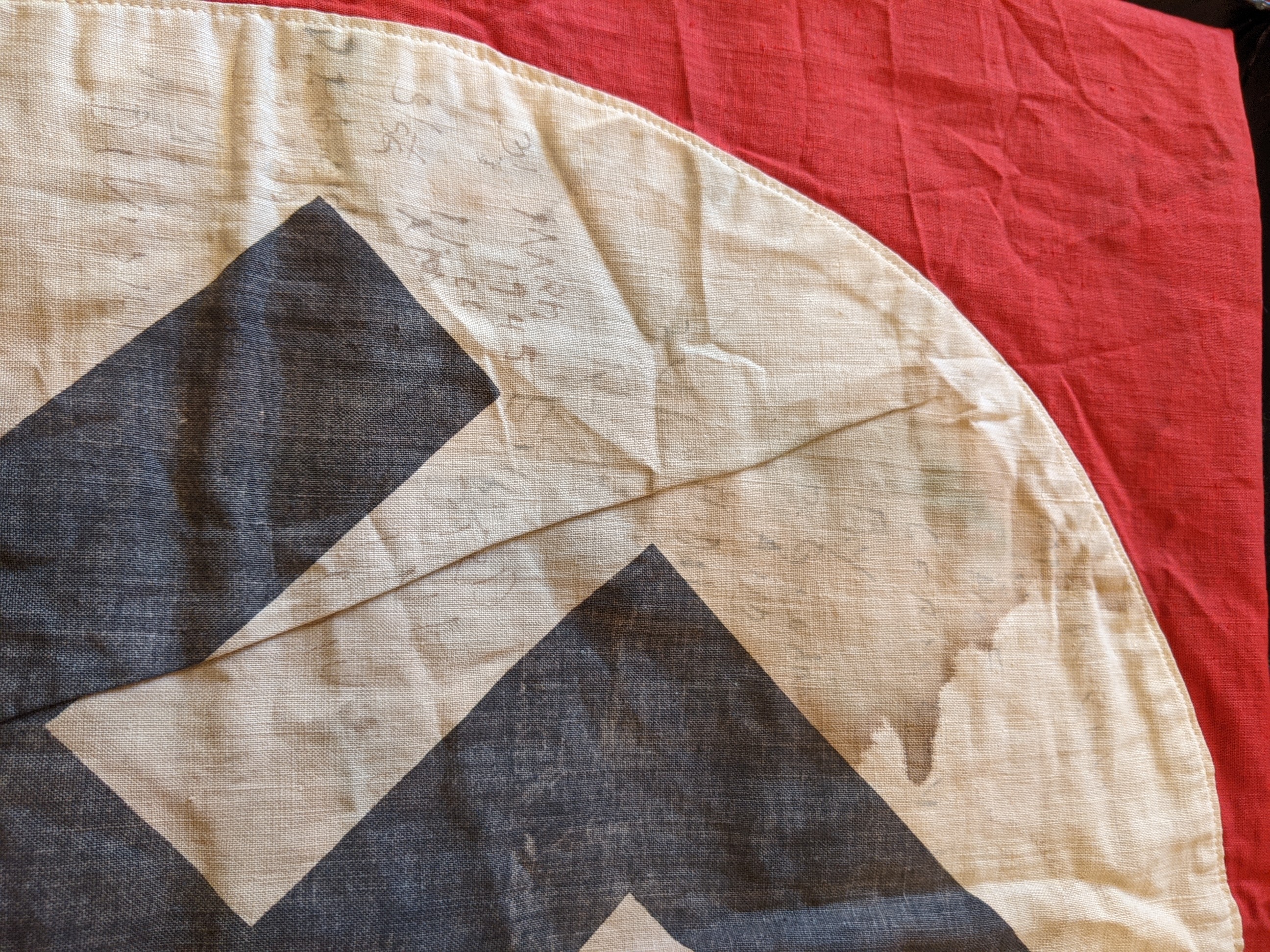
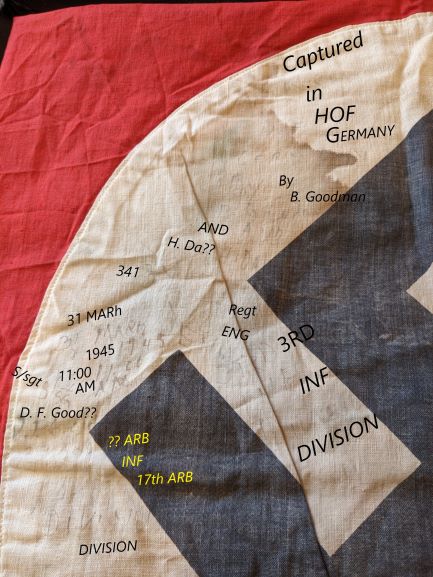

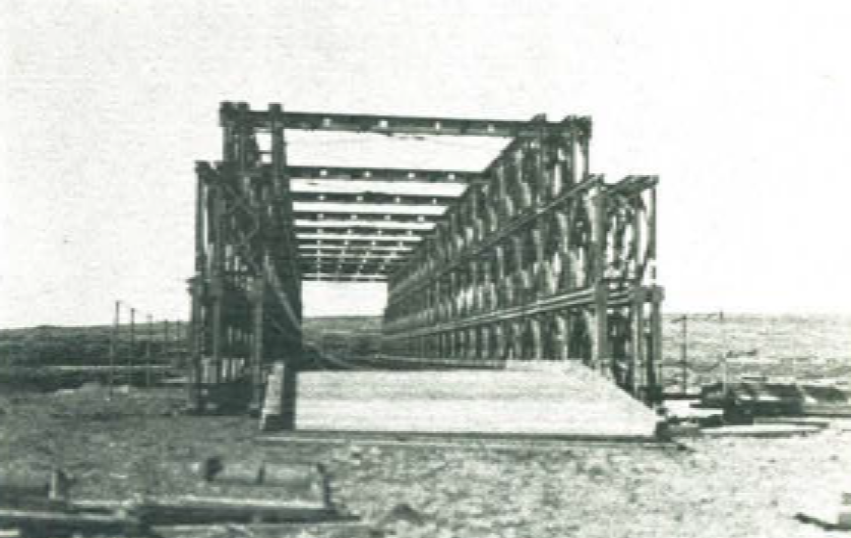
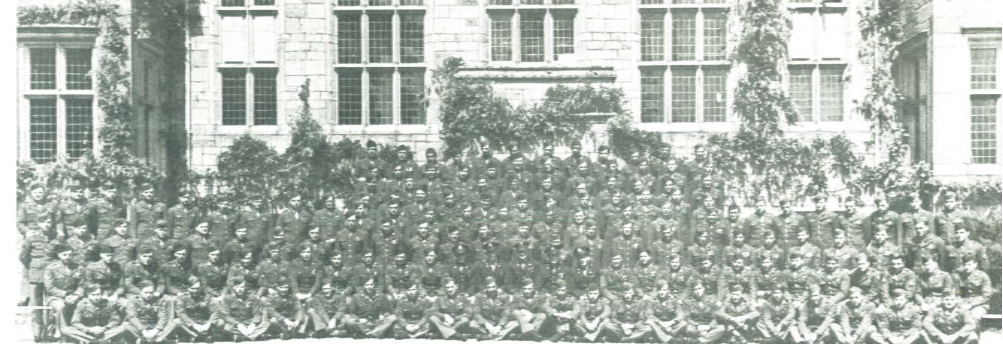
T/4 Irving J. Klein and his Captured Flag
Technician Fourth Grade Irving J. Kline, ASN 32709480, was assigned to the 44th Cavalry Reconnaissance Squadron (Mechanized) as part of the 11th Cavalry Group in the European Theater of operation. T/4 Kline served as a Prisoner of War Interrogation specialist with the 44th from 27 February 1945 until 2 May 1945. I was unable to determine his initial date of assignment to the Squadron.
The documents obtained outlining his career begin with a Pass to the 7th Army Recreation Center as a Technician Third Grade, T/3. The pass is signed by Major P. Kubola who was an officer in the Military Intelligence branch and the Commander of the SAIC (MFIU #5) Seventh Army Interrogation Center, Mobile Field Interrogation Unit No. 5. The MFIUs were responsible for interrogating enemy prisoners and civilians to gain immediate intelligence about the enemy actions and units in the area. Since Kline is a name of German decent, it is conceivable that his ability to speak German was valuable in his role in the unit.
The MFIUs were also tasked with finding out information about specific war crimes and war criminals who were being sought for the pending War Crimes Trials. MFIU #5 was instrumental in the interrogation of the following war criminals:
German Army Personnel: Apr. 29, 1945 MFIU 5/X/7
Curt Gallenkamp
Friedrich Herrlein
Helmut Thumm
Eugen Oberhaeusser
Paul Mahlmann
The 44th operated as part of the XIII US Corps on the Northern US sector of operations. Their axis of advance took them through the north central German plains to the Elbe River. In early May, the unit was responsible for operating in an area which was populated with many people recently displaced from their homes, or released from labor camps or otherwise. The Allies took great efforts to sort through these Displace Persons (DPs) and determine if they were soldiers in hiding, war criminals, or persons rightfully displaced and in need of temporary assistance. This area was populated with workers from the Eastern European countries as well as Russians. The image shows T/4 Kline with two Russian women. The caption written on back indicates, “Russians at Labor Camp near Peine Germany May 45” According to my research, Peine was known as Arbeitslage 134 (Work Camp 134), Scheicheldt, Kreiss (District) Peine, Germany and held forced laborers who were Soviet, Dutch, Polish, german and Russian. Following the war it was designated as an Allied DP camp.
Next is an image of Klein in an M-8 Armored Car. The M-8 is a common vehicle in the Armored Cavalry units. It was lightly armored, very fast and was armed with a 37mm main gun and usually an M-2 .50 caliber MG. Klein sits in the turret just behind the M2. Note the stack of ration crates on the rear deck of the M-8. The crates contain 10-1 rations, Menu #1. I believe there were 5 different menus to offer a variety of flavors and meal choices. The location is listed as Brome German, which is not too far from Peine and is dated April 1945.
Here is aImage of Klein ensconced in his temporary shelter. The shelter looks to be a dugout with wooden sides and roof covered in dirt for fragmentation protection. A simple corrugated sheet is placed in the ready to close up the front for a bit of added cover. He is armed with a standard M-1 Carbine. Of note is that in all of the images, T/4 Kline wears no rank insignia. This may have been to confuse the recently captured Germans into thinking he was not a typical soldier and this tended to make them more open. Many officers would not talk to a soldier of lesser rank and so when interrogating an officer he could have told them he was an officer. It was common for US officers to remove their collar insignia so as to make them less of a target to German snipers. I think this was common knowledge among German officers. This minor ruse, if performed with authenticity could have helped obtain more useful information.
The final image shows T4 Kline interrogating three recently captured German “soldiers” while another trooper watches or provides security. Note the placement of his right hand he is probably also wearing a shoulder holster with a .45 Auto and is ready to draw it if needed. T4 Kline seems a bit casual given the situation, but the three prisoners appear to be no older than 15 or 16. They are all wearing the late was M-44 pattern wool jackets and the blurry nature of the original makes it impossible to determine from the cap or breast eagle if they are Heer or Luftwaffe prisoners.

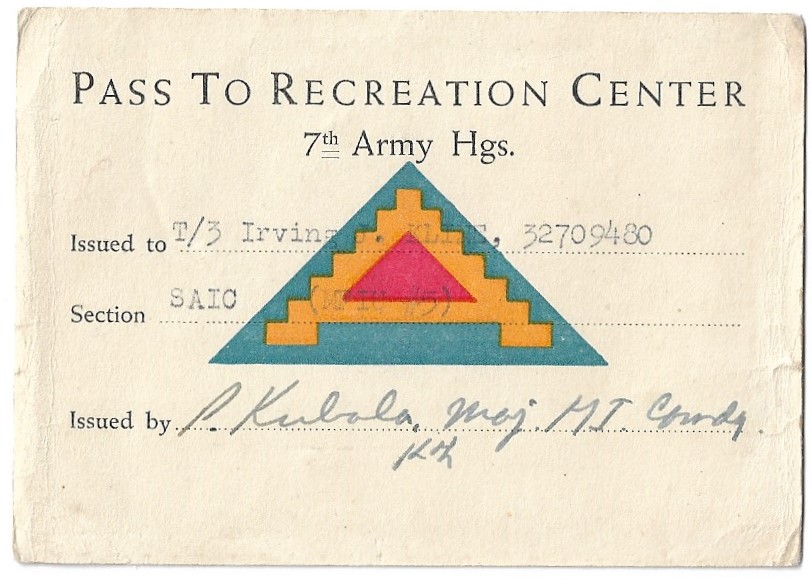

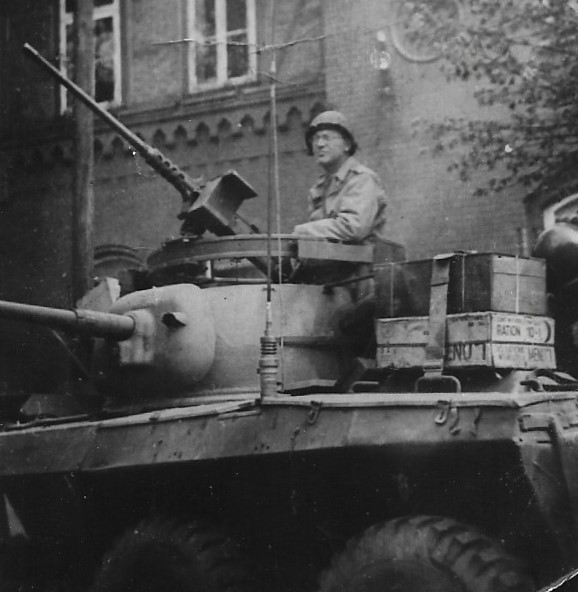
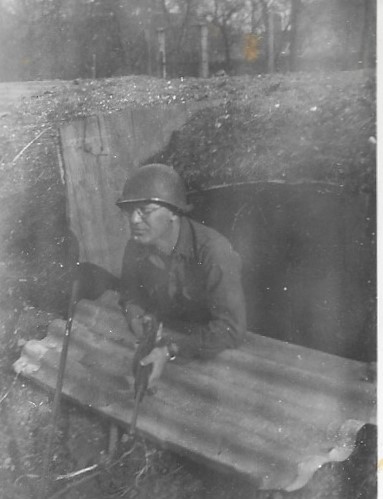

The following topographic maps show the locations of Peine and Brome which are east of the German City of Hannover in the north central region of the country. The 44th Cav roamed this area on their axis of advance during April and May of 1945 as the war was winding down.
It would be a fascinating exercise to travel to Peine and Brome and find the building in front of which T/4 Klein is standing as the photos were taken. It looks as if these towns were not ravaged with by bombs, artillery and heavy fighting suffered by other areas of Germany, so there is a chance that one could find the same building after 75 years.
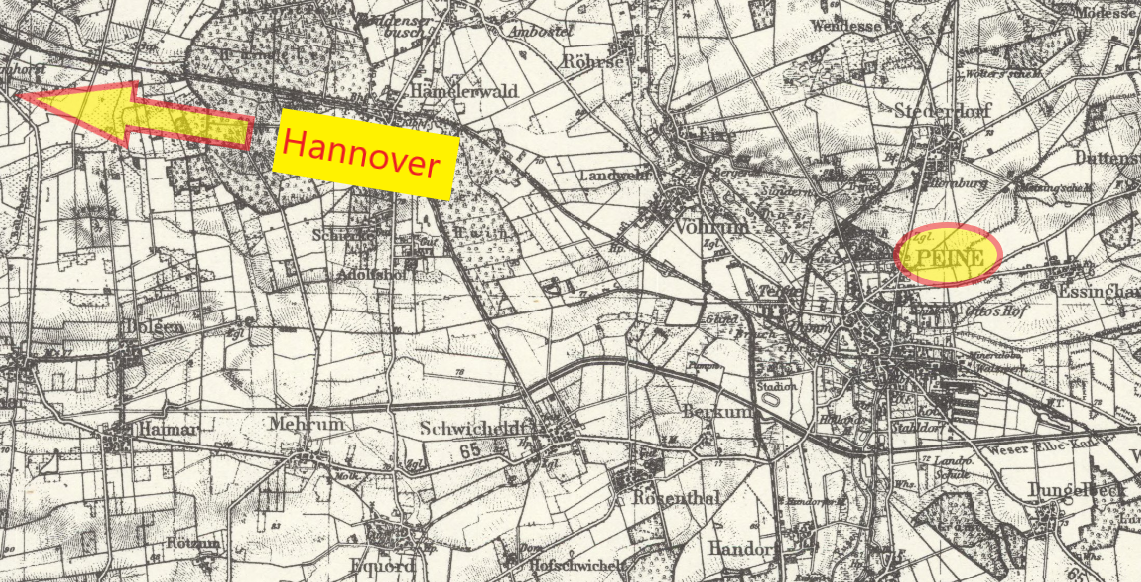
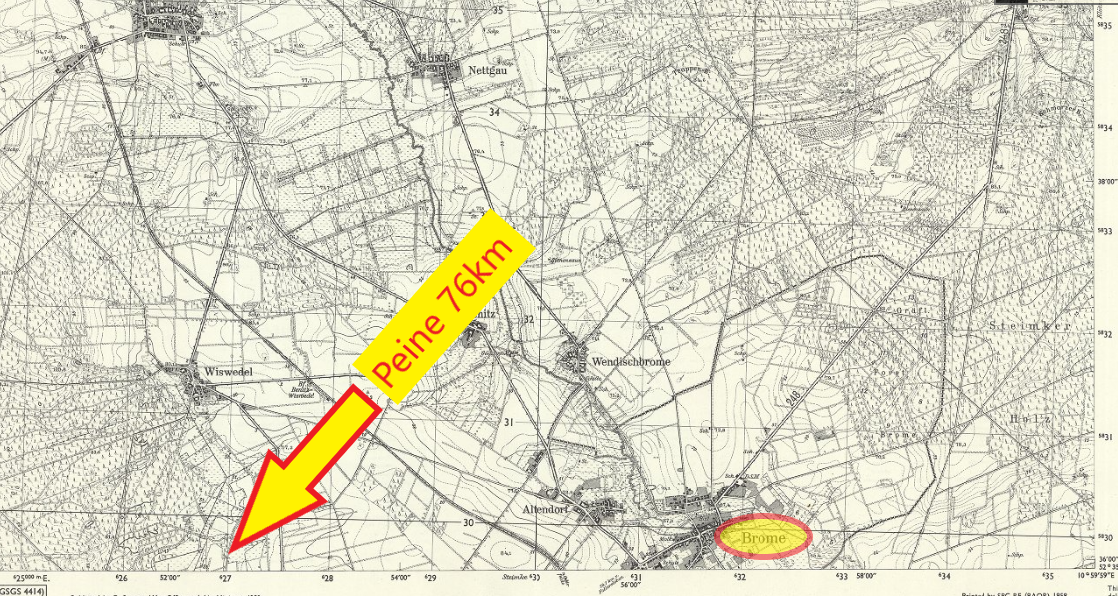
This final Klein artifact is a Letter of Commendation written by Klein's Commander as an endorsement for him to enter into the Officer Candidate Program at war's end. Unfortunately the signature block is missing, so identification of the officer's name is not possible.
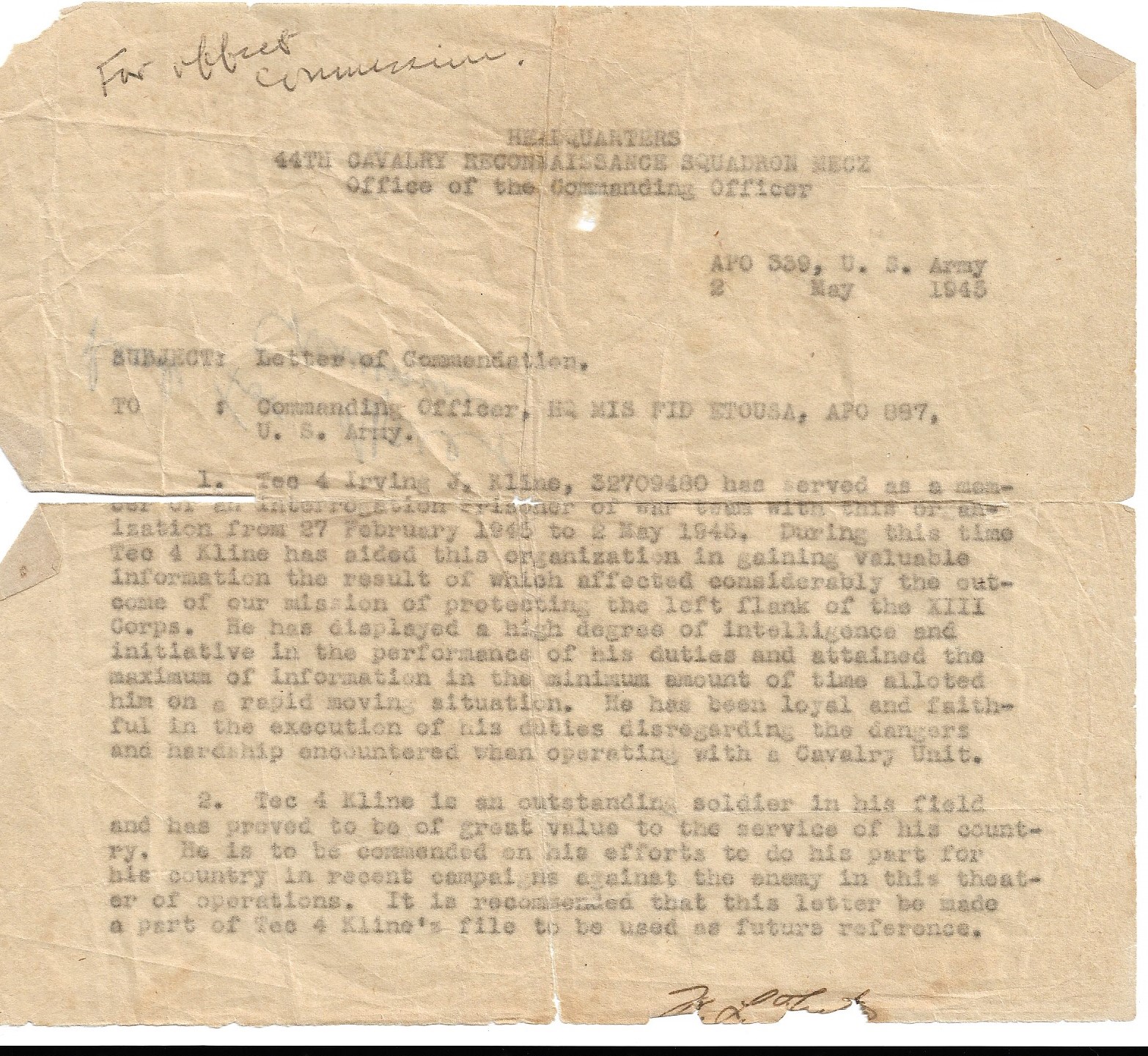
823rd Tank Destroyer Battalion Captured Flag
This recent acquisition of a photograph of an M-10 crew holding a captured Nazi flag arrived. I was very please not only because of the nature of the image and its tie to another WWII Tank Destroyer unit, but because I was able to confirm the unit and four of the five names of the crew. Unfortunately the man who owned the camera, had the photos developed and sent home only wrote “me” on the back for obvious reasons. He did identify his other four crew mates by nick name, crew position and last name.
An addition piece of evidence was the date of June 1945 and the name of a town, Klingenthal. A quick search for “map Klingenthal Germany” took me to an area of central Germany near the Czechoslovakian border. On VE Day, 7 May 1945, the XIII US Corps was operating in this area. The 30th Infantry Division was assigned to the XIII Corps, and one of the units attached to the 30th was 823rd Tank Destroyer Battalion. On a hunch, seeing that the crew was on an M-10 Tank Destroyer, I searched for a roster for the 823rd and found a match for 4 of the last names listed on the back of the photos. The following rather uncommon names all were linked to C Company, 823rd TD Bn. It could not be a coincidence that all four uncommon names came from one company. I am 100% certain that these are they very same men in the photos.
SGT Alvin Sandell, Horn Beck, LA, Tank Commander
CPL Harold F. “Duck” Plaeger, New Orleans, LA, Gunner
PFC Richard “Pee Wee” Cervenka, Cleveland, OH, Loader
T/4 Wilson J. “Coon Ass” LeJeuene, Sulphur, LA, Driver
unknown crew member, Assistant Driver/Radio Operator
Unfortunately I will probably never be able to identify the soldier who took these images his crew in Germany in 1945. In any case the information available on the crew and their exploits in 1945 are fascinating.
Tank Destroyer Battalion was activated on 25 July, 1942, at Camp Carson, Colorado. Following the unit's build u and training there, they participated in the Louisiana Maneuvers at Ft. Polk, LA. Once the unit was designated combat ready, the embarked for the ETO and arrived in England in April, 1944. The unit was designated as one of the follow-on landing units and arrived at Omaha Beach on 24 June with their towed 3-inch guns. The battalion supported drive on St. Lô., they fought at Mortain in August, drove through Belgium and into Holland entering Germany on 17 September 1944. They unit fought along Siegfried Line throughour October and was an element of the encirclement of Aachen. During the beginning of November, the unit began to receive their M-10 Tank Destroyers and handed over their towed 3 inch guns. It was a welcomed change to the unit's Table of Organization and Equipment. Following the German assault into Belgium on 16 December, the unit shifted rapidly to the Ardennes region in late December and fought East of Bastogne as part of the combined Allied effort to drive the German armies out of Belgium and Luxembourg. They crossed the Roer River on 24 February and Rhine River on 24 March. As part of the Allied pursuit operations, they raced eastward to Elbe River at arriving at Magdeburg in April. They began military occupation duties on 21 April and continued in this capacity well into June 1945.
One of the men in the photos was Alvin Sandell who was born on 1 March 1922, in Hornbeck, Louisiana. The son of Alvin Floyd Sandell and Lela Curtis, he was the sixth son of fifteen children. His father was a preacher but had also worked as a lumberjack prior to receiving his calling to preach. As was the case with many young men or teenagers during the pre-war years, Alvin had to quit school early to help the family earn a living on the farm.
In 1940 the US government appropriated the Sandell's land to build Fort Polk and the Joint Readiness Training Center. The family were told to depart immediately and had to leave almost all of their food out in the fields. They secured all the lumber and building materials they could from the old house and loaded it on a wagon. They found a suitable piece of land nearby in Toro, LA and lived there as squatters. The area where they settled was heavily wooded. There was little time for building a house as they spent most of the season clearing the land to prepare it for farming. They spent most of the first year living in a makeshift home that had a dirt floor. Today, two monuments stand in recognition of the sacrifice the Sandells and many other families made to support the war effort.
Alvin enlisted on 18 December 1942 at Shreveport, LA. Due to the proximity to Christmas Day, Alvin was given permission to remain at home with his family for the holiday and then left on the 26th for Camp Bowie, Texas. Following Basic Training at Camp Bowie, he was eventually assigned to C Company, 823rd Tank Destroyer Battalion. Alvin's cousin, Huston, was also assigned to the 823rd but became a Medic in B Company. Both were then sent with the unit to Camp Hood, TX, for additional training. Alvin was promoted to the rank of Private First Class, PFC within the first six months and a few months later was promoted to Corporal. Prior to the Battalion's departure to the European Theater, he was promoted to Sergeant and served as a Tank Commander in a crew of five men.
On 5 June 1942, well before leaving for England, Alvin married the former Zelma Mae Cox. The couple eventually made their home in Gretna, LA. When he returned home, Alvin worked for the US GSA (General Services Administration) and in his spare time he enjoyed fishing and shrimping. Zelma and Alvin had two children, Jeanette who was born in 1944 and Ronald who was in 1947. Alvin passed away on June 30, 1973. It was Alvin's Nephew Randy Sandell who provided the details of this narrative which was featured in the website tankdestroyer.net
Richard “Pee Wee” Cervenka was born in 1925. He lived in Cuyahoga County Ohio and was able to finish one year of high school before being called away to help the family make ends meet like so many others of his generation. He served as a messenger, most likely in Cleveland, delivering notices, letters and messages for agencies and businesses in the city. On 13 July 1943, Richard reported to the Recruiting Station in Cleveland Ohio and enlisted in the US Army. He was assigned the Army Service Number of 35069476. At the time of his enlistment he was single with dependents. It is unknown if those dependents were his parents, siblings, or children of another who became his financial responsibility. Following basic training, Richard made his way to the 823rd and into Sgt Sandell's M-10 Tank Destroyer. He was most likely the crew's Loader, as the owner of the photos is shown seated in the left front of the vehicle where the Assistant Driver rode with the caption, “coming up for air”
CPL Harold F. “Duck” Plaeger was born on 24 Mar 1914 in New Orleans, LA. Many of the men of the 823rd were recruited from the Louisiana area. Three of the crew were also from Louisiana. The oldest member of the crew at 31 by war's end, One can see his receding hairline. In the photos of the crew one can barely make out a wedding ring on the finger of his left hand. It is most likely that Harold married Earline before either training or deploying to England, and given his age, he was probably already married long before enlisting. Federal records list a Harold Plaeger from New Orleans with an ASN of 38742370, although the date of enlistment and middle initial do not align with Duck's service. In any case following basic training he made his was to C Company, 832rd TD Bn as part of Sgt Sandell's M-10 crew. Given the higher rank of Corporal, he was the second most experienced man in the crew and most likely served as the gunner. Harold handled the aiming and firing of the M-10s powerful 3-inch or 76mm gun that sat in the open turret of the M-10. Harold passed away on 16 March 2004 just before his 90th birthday. His wife Earline followed him in peace two years later on 11 December 2006. She was 91 years old.
Not much is known about Wilson J. “Coon Ass” Lejeune. In the Big Woods Cemetery in Vinton LA, there lies a headstone for Wilson J. LeJeune, Vinton is only a few miles from Sulphur, which Wilson listed as his hometown in the 823rd History. The headstone lists his birth date as 20 April 1919 and his date of death as 1986. At his death he was only 67. His wife, Melba H. Lejeune, was born in 1923 and passed away eleven years after him. She was 74. At some unknown date, Wilson completed his training and was also assigned to Sgt Sandell's M-10 crew. The photos list him as the the driver. His grade as the driver at the end of the was was Technician 4th Grade or T/4.

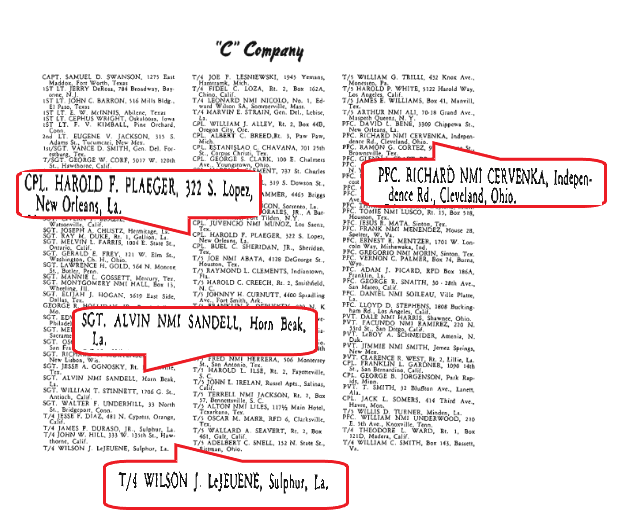
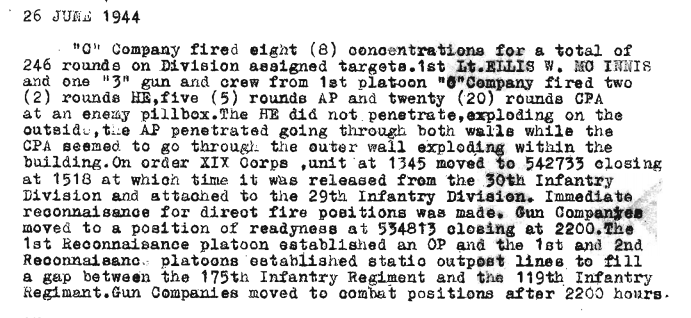
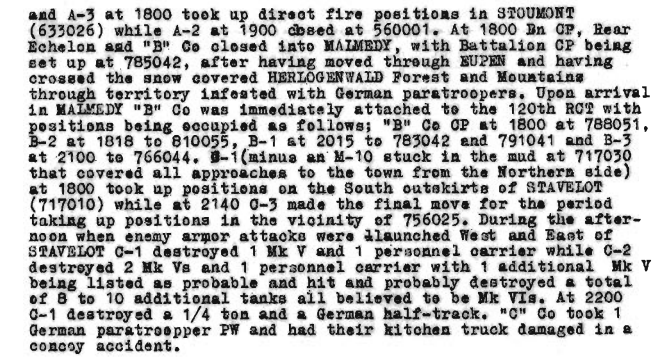

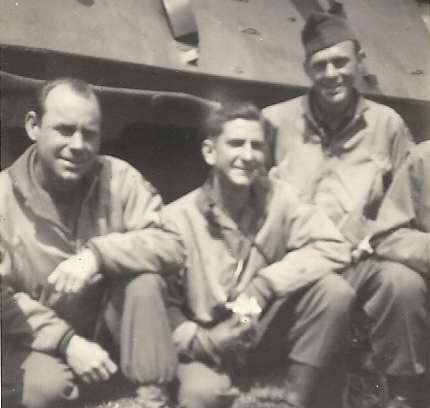
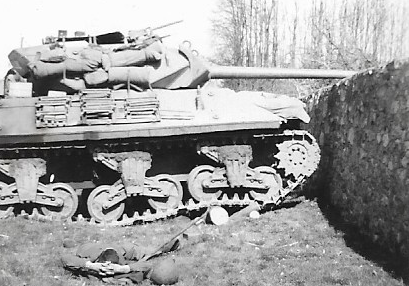
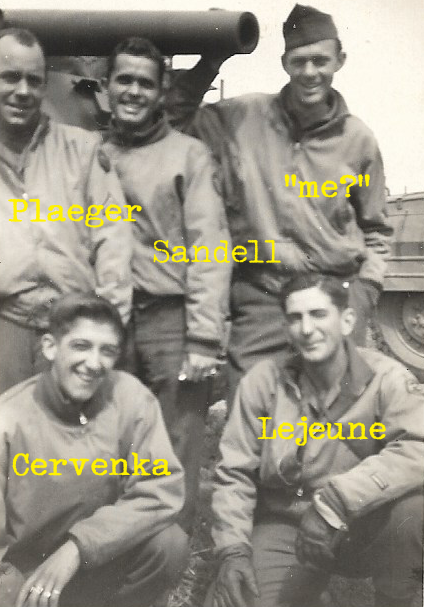
This photo shows the entire crew with all known names. They seem happy in June 1945, knowing that the shooting and killing is over. Soon they will be home. Their uniforms consist of a combination of wool trousers and shirts, one and two-piece HBT uniforms, and all are wearing the coveted lined tanker jacket. Each wears the distinctive Tank Destroyer emblem on their shoulder and along with their rank. Of interest is Lejeune is wearing two "overseas bars" on his lower sleeve denoting 12 months iof overseas service.
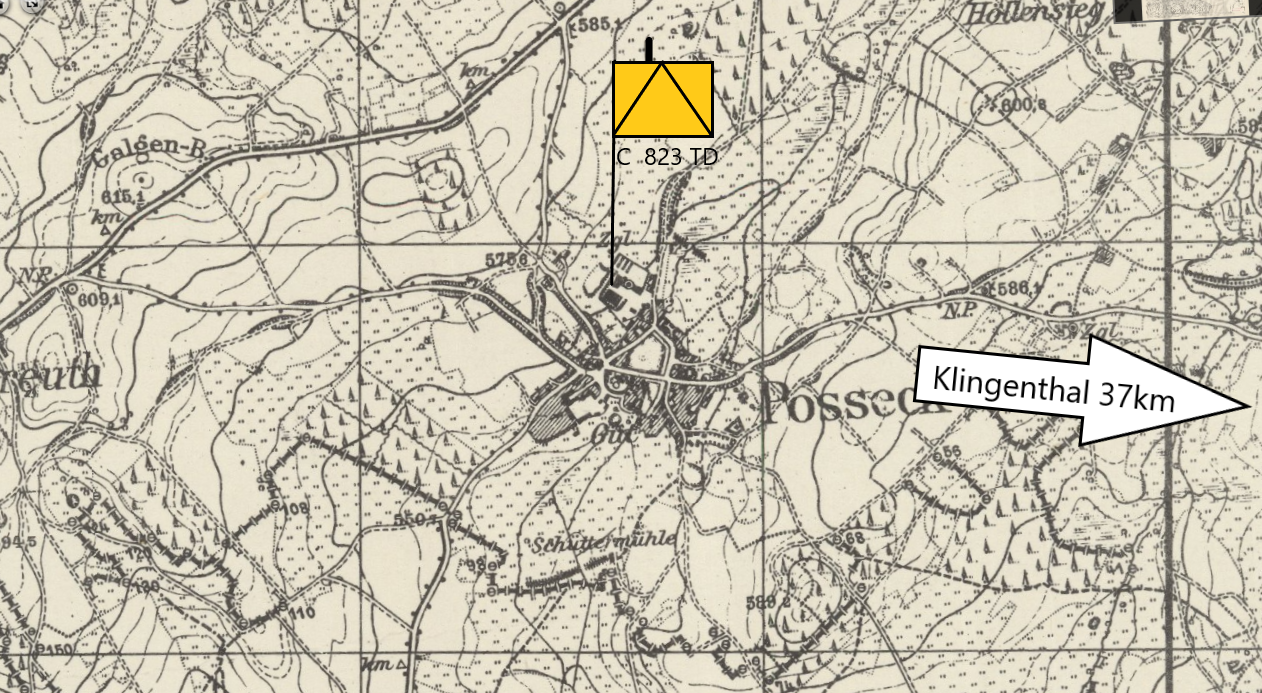
In the offical After Afction Report for the 823rd from 31 June 1945 lists C Company, 823rd TD Bn as located in the German town of Posseck at coordinate K086018. The photos that were taken in mid-June were about 37 km east of this location in the town of Klingenthal.
Captured Flags and Landing Ship Tank (LST) -387
I normally don't collect Navy items, but this grouping came from a tattered photo album and included 4 ETO captured flag images in the group. As I did the research of LST-387, some really interesting facts were revealed making me glad that I acquired this group.
LST-387 was ordered by the Department of the Navy on 21 May 1942. A month later on 20 Jun 1942, her keel was laid by the Newport News Shipbuilding and Dry Dock Co. in Newport News, VA. Three months later, on 28 Sep 42 she was launched and then commissioned on 17 November of the same year.1
1Dictionary of American Naval Fighting Ships, Volume 7 p. 618
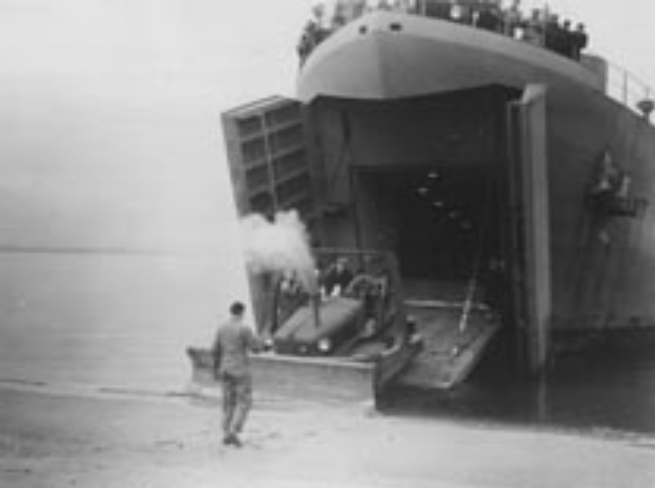
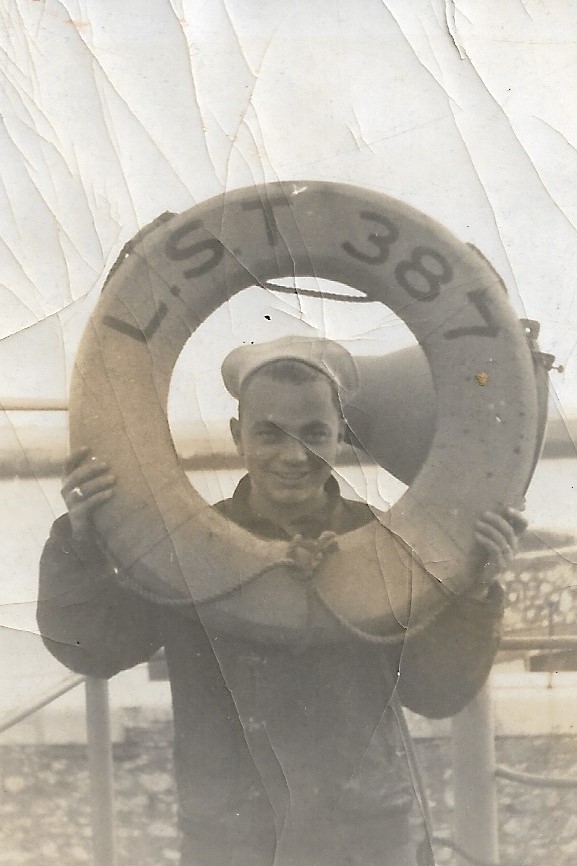
She had a length of 327’ and a beam of 50’, displaced 1625 tons. and unloaded drew 3’4” of water at the bow and 7”6” at the stern, while fully loaded drew 8’2” at the bow and 14’1” at the stern. This shallow draught made her ideal for invasion operations. She was powered by two General Motors 12-567 diesel engines with two shafts, two screws and two rudders with a total of 1800 horsepower. At sea she made 12 knots. Her armament consisted of two twin 40mm guns, four 40mm guns and twelve 20mm guns. She had a compliment of 115 officers and sailors.2
LST-387 was commanded by Lt Curtis M. Rocca, USNR. He was born on 5 March 1918 and received his commission in the USN Reserve on 21 May 1938 as an Ensign after graduating from the Naval Reserve Officer Training Corps. He was trained as a commissioned deck officer, qualified for general detail afloat or ashore in the general services of the volunteer reserve.3 The October 1938 publication “The Log” list his new appointment.4 I could find no definitive image of him. As of 1 may 1945, LTCDR Rocca commanded ARL-3, a landing craft repair ship and spent most of its time in the Pacific Theater of Operations.5 On July 22 1948, Rocca was promoted to his final grade, that of Commander. He retired from service in May of 1954 having served for 26 years.
Late in 1942 the Chief of Naval Operations approved a secret order, Project GOLDRUSH. Its purpose was to execute a test of debarkation of various types of equipment from the landing ship tank. LST-387 was selected for this test. During the period of 1 – 8 Dec 42, LST-387 was used for unloading operations on two types of beaches, one shallow where the ship had to be grounded some distance from shore, and one steep where her bow could practically be beached on the shore for unloading. Equipment stored on board could be rapidly moved through the bow door of the lst and dispersed onto the beach using gasoline driven fork trucks. An entire ship could be unloaded in the course of 6 – 7.5 hours and the ship could depart that night for subsequent operations. The images of the ship with her bow doors open are from that report.
3REGISTER of the Commissioned Officers, Cadets, Midshipmen, and Warrant Officers of the United States Naval Reserve ' JULY 1, 1941
4The Log, October 1938, p. 26
5https://www.history.navy.mil/research/library/online-reading-room/title-list-alphabetically/u/us-pacific-fleet-organization-1may1945.html

Just a year and two days after her keel was laid, on 22 June 1943, she was torpedoed by U-593 while enroute as part of Convoy ELASTIC about 50 miles east north-east of Algiers. A single torpedo rendered her immobile and she was towed to Dellys, Algeria for repair. Being severely damaged she was unable to participate in Operation HUSKY in July 1943. It took 14 months to get her serviceable again.
23 sailors were killed in combat on 22 June. Two died of wounds, one the next day and the other on 4 July 1943. One sailor was listed as missing and subsequently declared KIC, Killed in Combat).
KILLED IN COMBAT
Baumil, William Robert , Radioman Second Class
Bish, Alexander , Electrician's Mate Second Class
Blair, Bernard Leland , Motor Machinist's Mate Second Class
Boltz, Howard Floyd , Machinist's Mate Second lass
Brown, Emerson Bice , Motor Machinist's Mate First Class
Brown, Warren Dean , Fireman First Class
Cavanaugh, Edward James , Motor Machinist's Mate First Class
Cordova, Edward Herbert , Coxswain
Crumly, Lewis Victor , Motor Machinist's mate first class
Cunningham, Robert Thomas. Ensign , motor Machinist's Mate Second Class
Dockter, Elmer Vyran , Seaman Second Class
Esteban, Gabriel Ausutine , Radioman Second Class
Fallow, Guy Denham , Ship's Cook Second Class
Grubbs, William Thomas , Chief Radioman
Hogue, Milton George , Radioman Third Class
Janusek, Paul Joseph , Motor Machinist's Mate First Class
Jones, Clay B. , Ship's Cook Third Cass
Jones, Herbert Lavern , Radioman Third Class
Jones, Jack Howard , Radioman Third Class
Koppel, James Louis , Fireman First Class
Mahon, Fred , Radioman Third Class
Rose, Wilbur Charles , Motor Machinist's Mate First Class
Unsworth, Norman , Radioman Second Class
MISSING IN ACTION
Ruemmele, Arthur Charles , Electrician's Mate First Class
DIED OF WOUNDS
Huffman, Marvin Chase , Radioman Third Class
Jahn, Marcus Leonard , Radioman Third Class
U-593 was commanded by Kapitänleutnant Gerd Kelbling. I've included his image for historical purposes below. Kelbling served on 16 patrols from 23 Oct 41 to 13 Dec 43 for a total of 338 days at sea. He is credited with having sunk approximately 67,000 tons of allied shipping and was awarded the Knights Cross on 19 August 1943. After achieving success during 15 patrols, his U-boot was sunk on 13 December 1943 after being hunted for 32 hours by two destroyers. She was sunk in the Mediterranean by HMS "Calpe" and USS "Wainwright" (DD-419) by depth-charge attacks in position 37° 41' n., 06° 06' e., at 1450 on 13th December, 1943.6 At last the deaths of 26 sailors of LST-387 were avenged. The commander and tPOWentire crew were taken prisoner. Kelbling was held in a Canadian pow camp and didn't return to Germany until September 1947 7
6C. B. 0451 U-593 Interrogation of Survivors February 1943, Naval Intelligence Division Admiralty S. W. 1 p.1
7https://uboat.net/allies/merchants/ship/2958.html

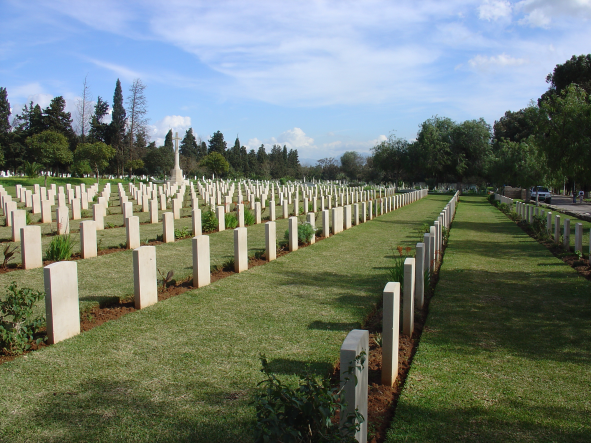
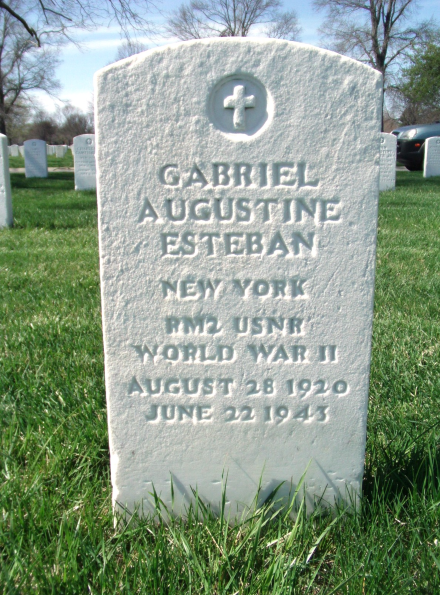
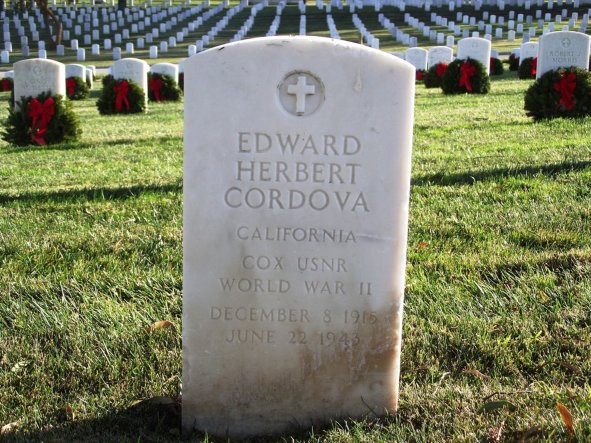
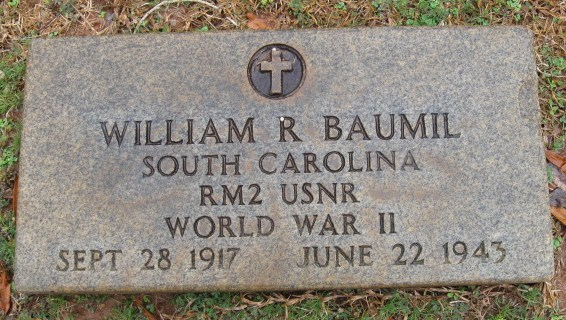
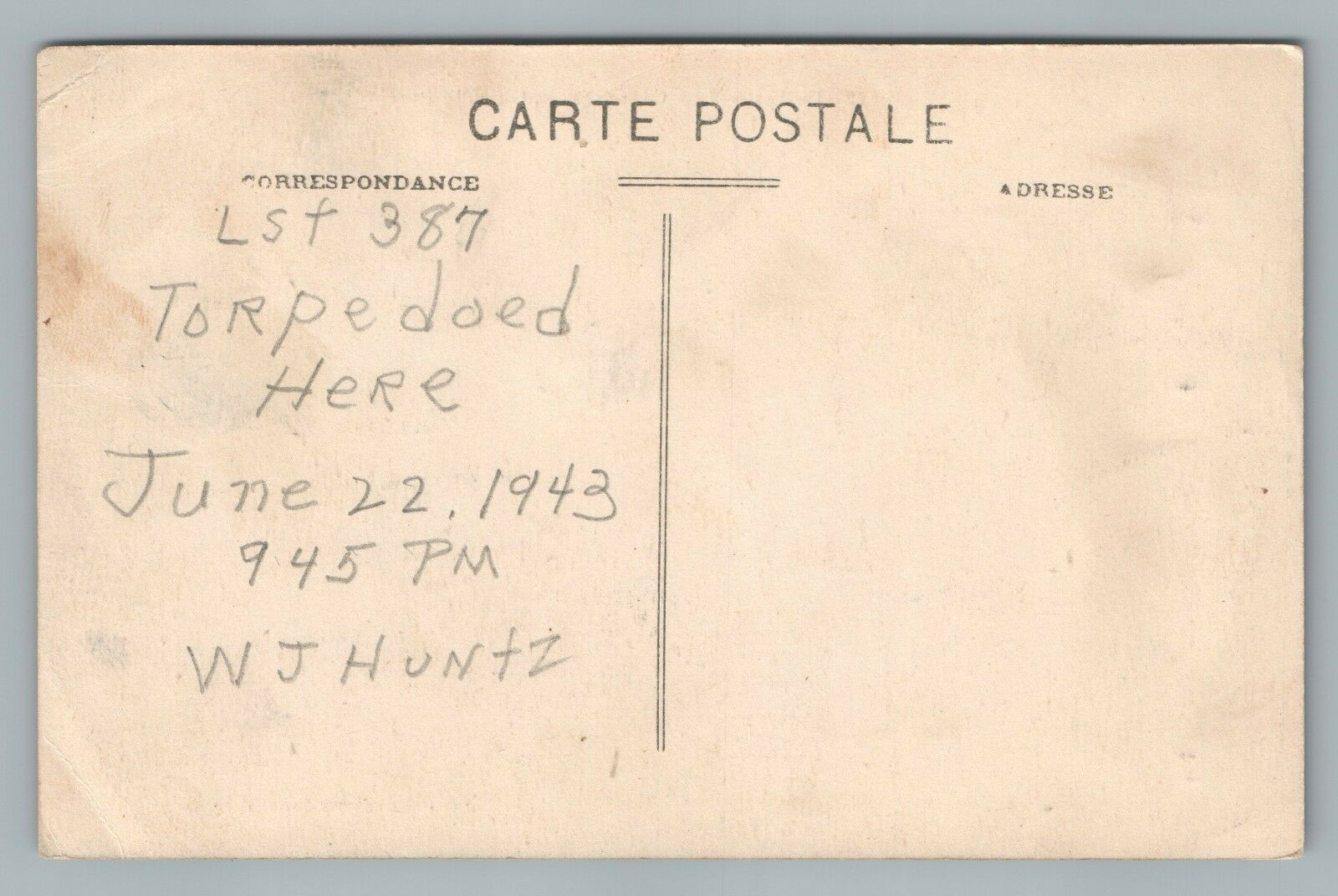
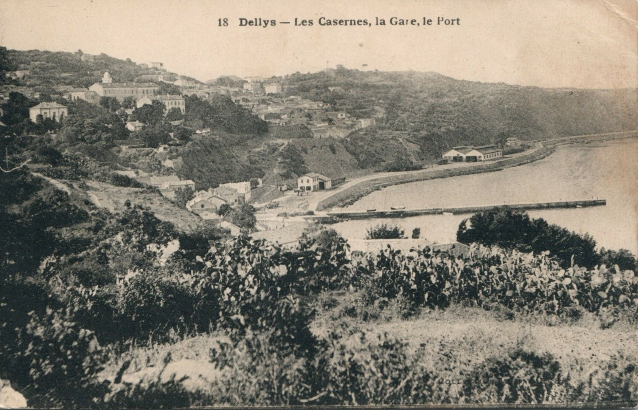
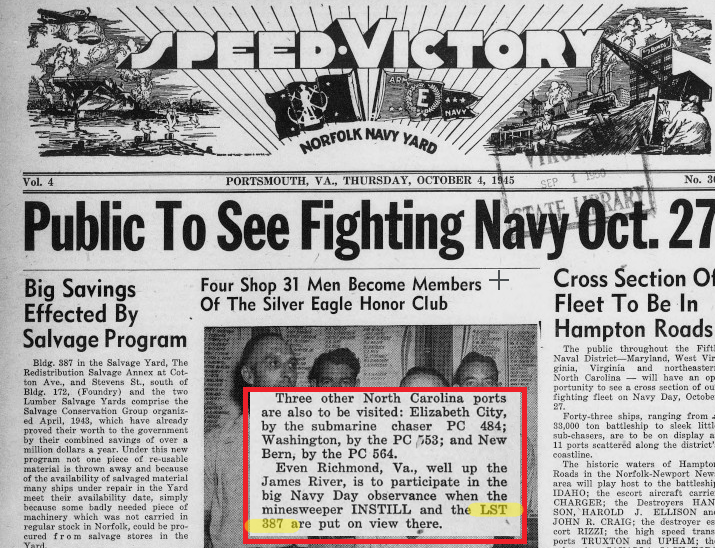
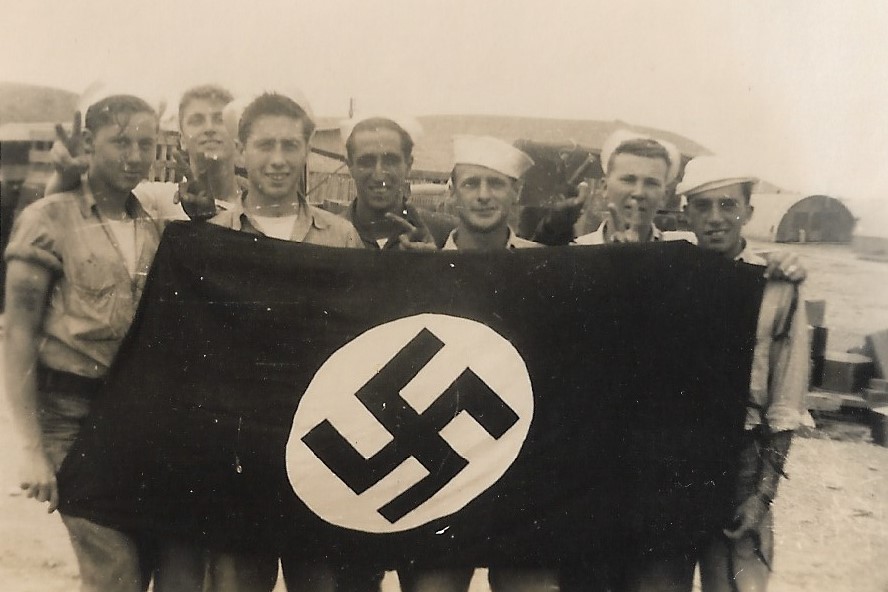
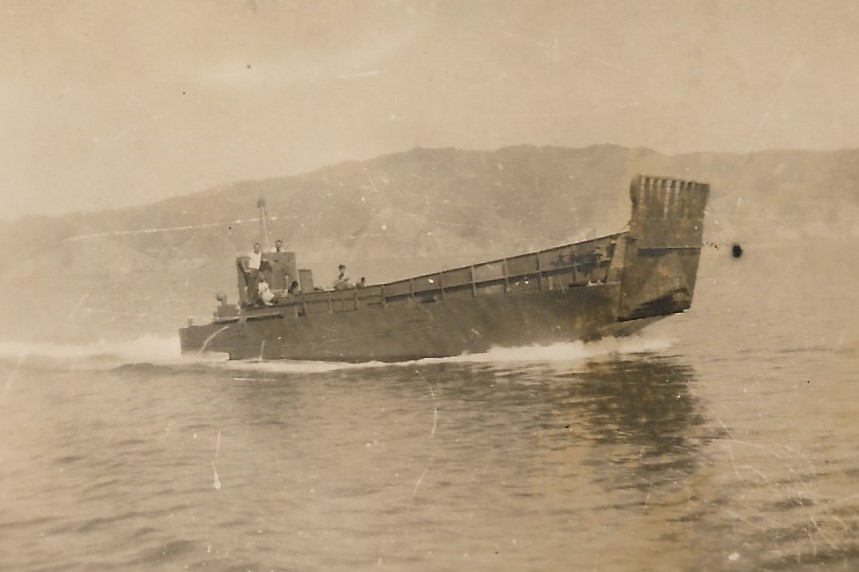
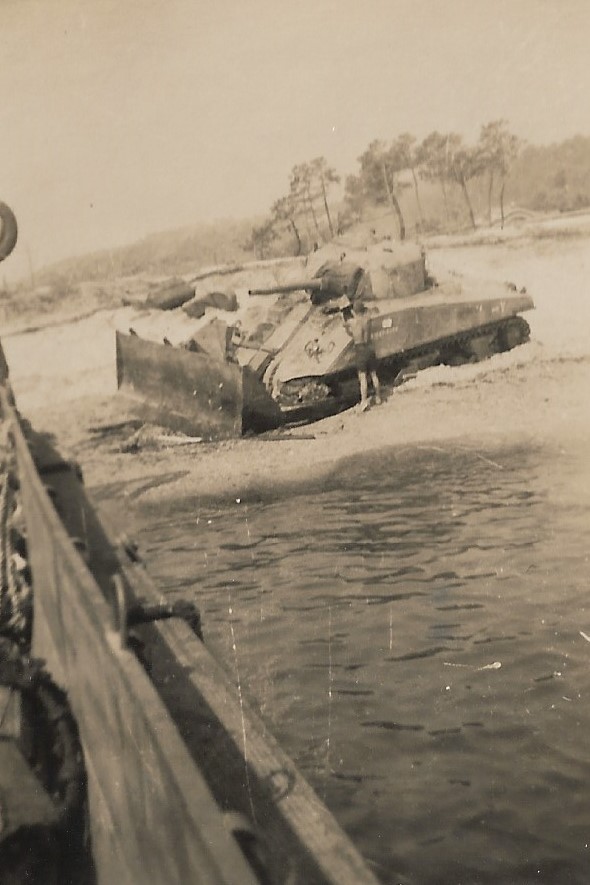
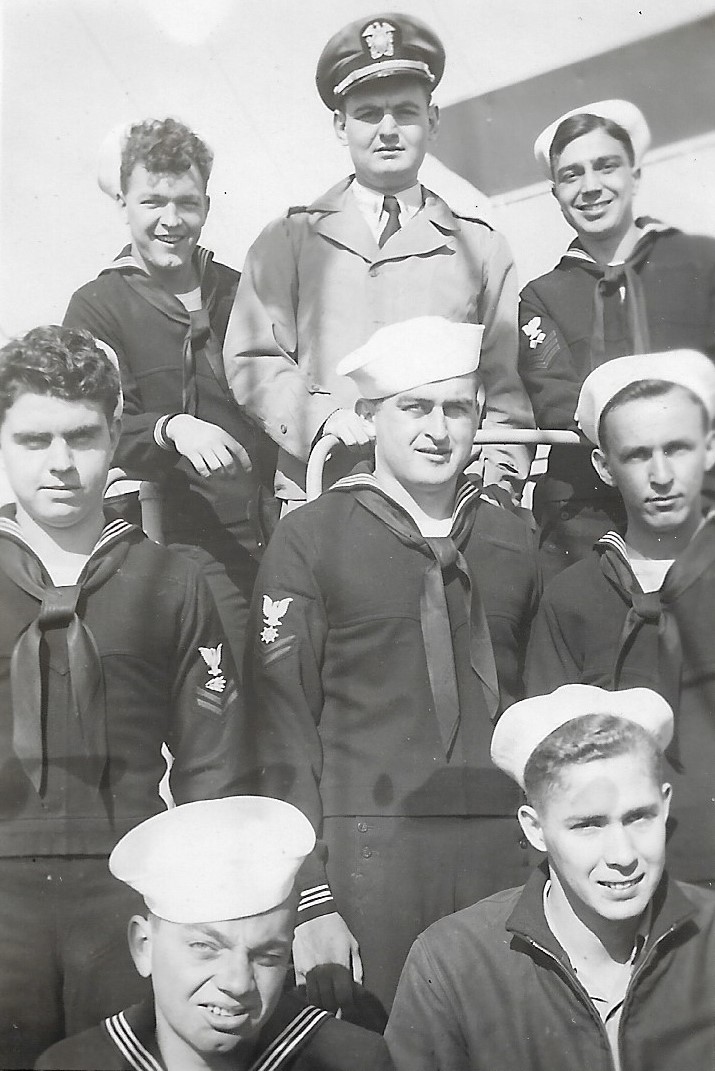
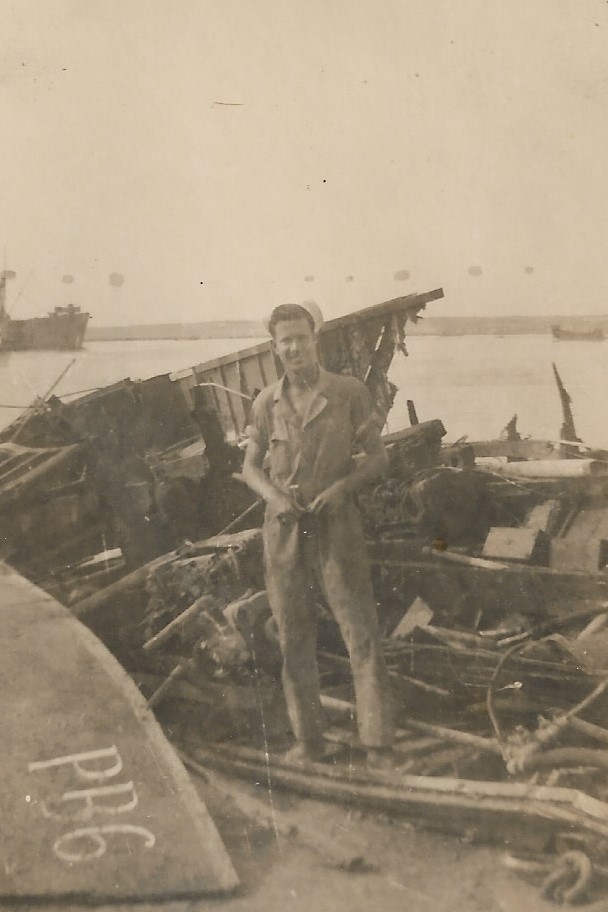

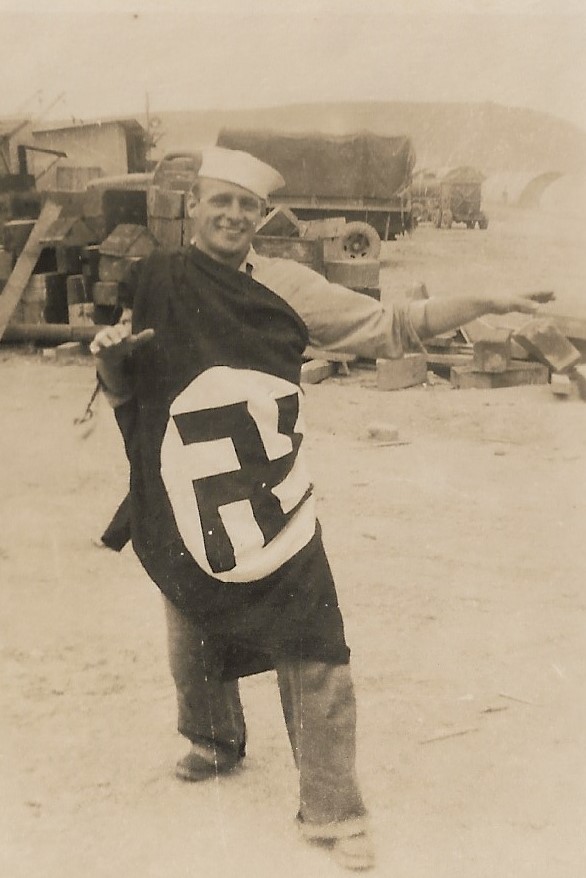

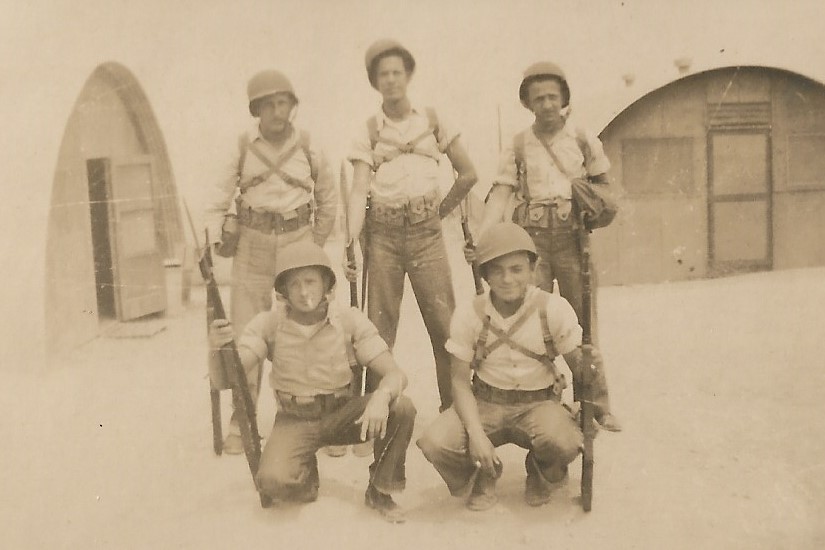
Ensign Charles Wilson recorded the events of 22 June while aboard LST-387. He kept an unauthorized diary and wrote that a torpedo came from the shore ward side and hit the stern of the ship causing damage to the crews’ quarters. He further reported”...sending the 3” 50 upside down and pointing forward toward the bridge. Burmeister (Donald Burmeister, Storekeeper 2nd Class) safe, 25 men killed and 4 injured. Needless to say, terrible catastrophe.”8
The following excerpt is taken from the Jackson Herald of Jackson County WV from October 1943. “A letter was received Friday by H. H. Brown, of Millwood, from the commanding officer of the ship on which his son, Dean Brown, was serving when he was killed in the Mediterranean Sea, on June 22, and the letter gave Mr. Brown the details of what happened, and also told him that the son's body was recovered and was buried in a cemetery on the outskirts of Algiers, in North Africa. Dean Brown had been previously listed as missing in action, and earlier last week the family had received information from the Navy Department that it had been established that the young man had been killed in action, but the commanding officer's letter was the first news the family had received on the events surrounding the young man’s death. The young man was a graduate of the Ravenswood High School, made the football team during his first year in school and was a popular student. He was 21 years old last June 15, just one week before his death, and the father said that the birthday present, which he and the boy's mother sent him never reached him and had been returned to them. In a broken voice the father, after reading the letter said: "Dean was no better than any other boy in this war, but he was a good boy, and nobody who hasn't had to go through with this thing can know just what it means to me." As words of sympathy came to the bereaved parents from friends everywhere, mr. Brown said, "Tell them all iIappreciate everything, and will never forget them because I wouldn't give my friends for all the material things in the world." The letter, which the father received from the commanding officer of the ship is as follows: "Sept, 15, 1943: My Dear Mr. Brown, if conditions had been entirely under my control, I would have written you this note immediately, offering my deepest condolences and sympathy, and giving to you the details of what happened on the night of June 22, 1943. The Navy Department has just given me permission to contact you and I hope it will help in some small way to know the circumstances. The men on board the LST 387 were close to one another and were a happy and jolly crew. Since our arrival in Africa we had been subject to many enemy attacks and every danger seemed to unify and strengthen the bonds of friendship. We all felt the losses as though they were members of our own families. On June 22 we were proceeding to Bizerte to take part in the Sicilian invasion. We had been designated to carry out a very important role, the completion of which was necessary for a successful operation. The Germans apparently knew this also, for at nine-thirty that night, without warning from our escort, a torpedo struck the 387. The whole after end of the ship was demolished by the terrific force of the explosion. The crew's quarters were badly hit and the majority of the men there were killed. Your son was off watch and in his quarters at the time, although I am sure he was killed instantly we were unable to positively identify him so we had to list him as missing. The remainder of the crew did a wonderful job in evacuating the dead, helping the doctor with the wounded and at the same time, keeping the ship afloat. Your son was taken to El Alia cemetery on the outskirts of Algiers and was buried with full military honors. All of the surviving officers and men were there and we had the last minutes of some of the finest men we will ever have the privilege to know. We have just returned to the United States to pick up a new ship and we hope in some way to be able to avenge our shipmates who are no longer with us, but will never be forgotten. Below are the names and addresses of your son's closest friends aboard ship, and I know that they intend to contact you at the first opportunity. I hope some day to call on you personally, but in lieu of that at the present time if there is anything I can do to help, please feel free to write. I was very fond of your son and he was a brave man. Very sincerely yours, CC M. Rocca, Commanding Officer".9 (Friday, Oct 8, 1943)
Mel Augustine was on LST-244 in the convoy and reported, “We were in a convoy of LCT's, LST's and merchant ships. Two LST's were torpedoed, the LST-333 and LST-387. The 333 was hit, torpedoed in the stern, and lost power. The captain of the 333 signaled LCT's 244 and 294 to come alongside, despite the moderate sea and lack of proper towing equipment, and the possibility of mines near shore and a nazi sub lurking in the area. Then a patrol craft led us in to Dellys, Algeria to a small naval salvage base. We got the army men to shore, the PC took us back to salvage more cargo and all of the ships crew. We worked the rest of the night and half of the next day.”10
Charles Wilson further recorded the journey of LST-387 to Dellys in his diary. “Through fine ship handling by the captain and with help from 2 LCT's the ship was towed into Dellys, Algeria, 60 miles east of Algiers. The wardroom and passage ways were strewn with casualties. “cookie” died in my arms, our doctor was heroic. Jim Kidder (Ensign James Henry Kidder) was on the conning tower and saw the torpedo on its was, he sounded general quarters, and those who were quick enough and lucky got out of the crews quarters. The stench from the explosion was suffocatingly sweet. Five seconds before we were hit, LST 333 received the same thing with same damage, she finally got ashore and sank.”11
Arnold Ness, who was born February 17, 1926 in Norway Township, MN joined the Navy in 1943 and went through boot camp at Farragut, Idaho. He then attended the North Dakota College of Technology and studies electronic technology. He volunteered for the amphibious forces and received extensive training in electrical and electronic technology at Little Creek, VA and was assigned to the LST-387 well after she was torpedoed. Following LST-387’ repair in the port in Algeria, she was sent to the Pacific Theater of Operations where Ness joined her crew. Shortly after arriving there, Japan unconditionally surrendered and her mission ended. The ship returned to the east coast and was assigned the hazardous task of disposal of old volatile ammunition and made numerous trips into the North Atlantic.12
Late in 1945, LST 387 returned to the east coast and made a showing at the Norfolk Navy Shipyard in October. Shortly thereafter she was decommissioned and sold for scrap.
This fantastic album contains over 100 images of the crew of LST-387. There are many images of ship board life, candid photos of the officers and crew and their time at sea and in Algeria while under going repairs. There is a great shot posted above of some of the damage taken from deck side above where the torpedo struck. Of special interest are the few images of crew members holding a captured Nazi flag and an Italian battle flag as well.
8The Utmost Spirit: Allied Naval Operations in the Mediterranean 1942-1945. Barbara Brooks Tomblin,
9Jackson Herald, Military News, Friday 8 October 1943,
10ibid
11ibid
12http://telelaget.com/lag/officers/ness.htm
89th Cavalry Reconnaissance Squadron (Mechanized) Captured Flag Photos
This fantastic group of photos and documents outlines a small slice of Klaus G. H. Johnson's military service during WW2. Klaus Johnson hailed from Allegheny, PA. He was born in 1915 and enlisted on 13 Oct 1941 at Camp Lee, VA at the age of 25. His civilian occupation prior to enlisting was a firefighter. At the time of his enlistment he was single with no dependents.
Following basic training, PVT Johnson, Army Service Number 33073990, was assigned to Able Troop, Provisional 92nd Reconnaissance Squadron (Mechanized) at Camp Funston KS. In January 1942, the 92nd began an expansion which included the addition of B, C and D Troops. On July 1 the Headquarters and Headquarters Troop was added. In July 1943, the unit was re-designated the 89th Cavalry reconnaissance Squadron (Mechanized). A few month later, F Troops was fielded and staffed with officers and enlisted men. The unit went through many series of changes in organization and equipment and eventually ended up with 4 reconnaissance troops (A, B, C, and D) and one assault troop (E Troop). All of the HMCs were consilidated into E Troop.
Klaus was far older than most recruits, and having had training and experience as a fireman, his leadership ability and maturity was recognized as he was quickly promoted to Corporal on 20 Mar 1942, not yet one half year after his enlistment. His Squadron Commander, Major Ceasar F. Fiore, signed his promotion orders making him a Corporal and most likely an Assistant Squad Leader.
The 92nd was initially part of the 2nd Cavalry Division, and when it received its designated as the 89th Cavalry Reconnaissance Squadron Mechanized it was assigned to the 9th Armored Division. It retained that designation through WW2 and into the occupation.
The WW2 Reconnaissance Squadron was composed of a Headquarters Troop, 4 Recon Troops A, B, C and D Troop, and 1 Support Troop. Easy Troop was the Support Troop element and was not necessarily assigned a recon mission, but served to provide extra firepower and shock to exploit the tactical situation via the quick moving M8 armed with the 75mm gun. E Troop was assigned 6 Officers and 108 Enlisted Members. The unit was divided into a Command Element and 4 Support Platoons. E Troop was equipped with the M-8 Howitzer Motor Carrier (HMC), M-3 Half Tracks, 2 ½ ton trucks and the ubiquitous Jeep .Each support platoon was assigned 21 enlisted members and one officer and was equipped with 5 HMCs.
The unit participated in desert training in California and eventually spent time at Camp Polk during the Louisiana Maneuvers in 1944 before being sent to the ETO.
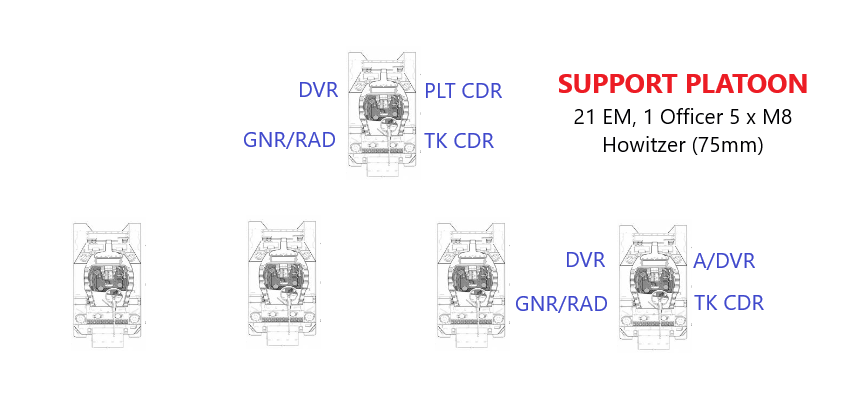
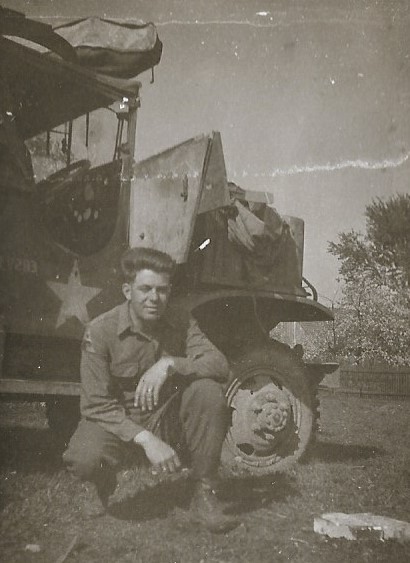
SGT Klaus G. H. Johnson
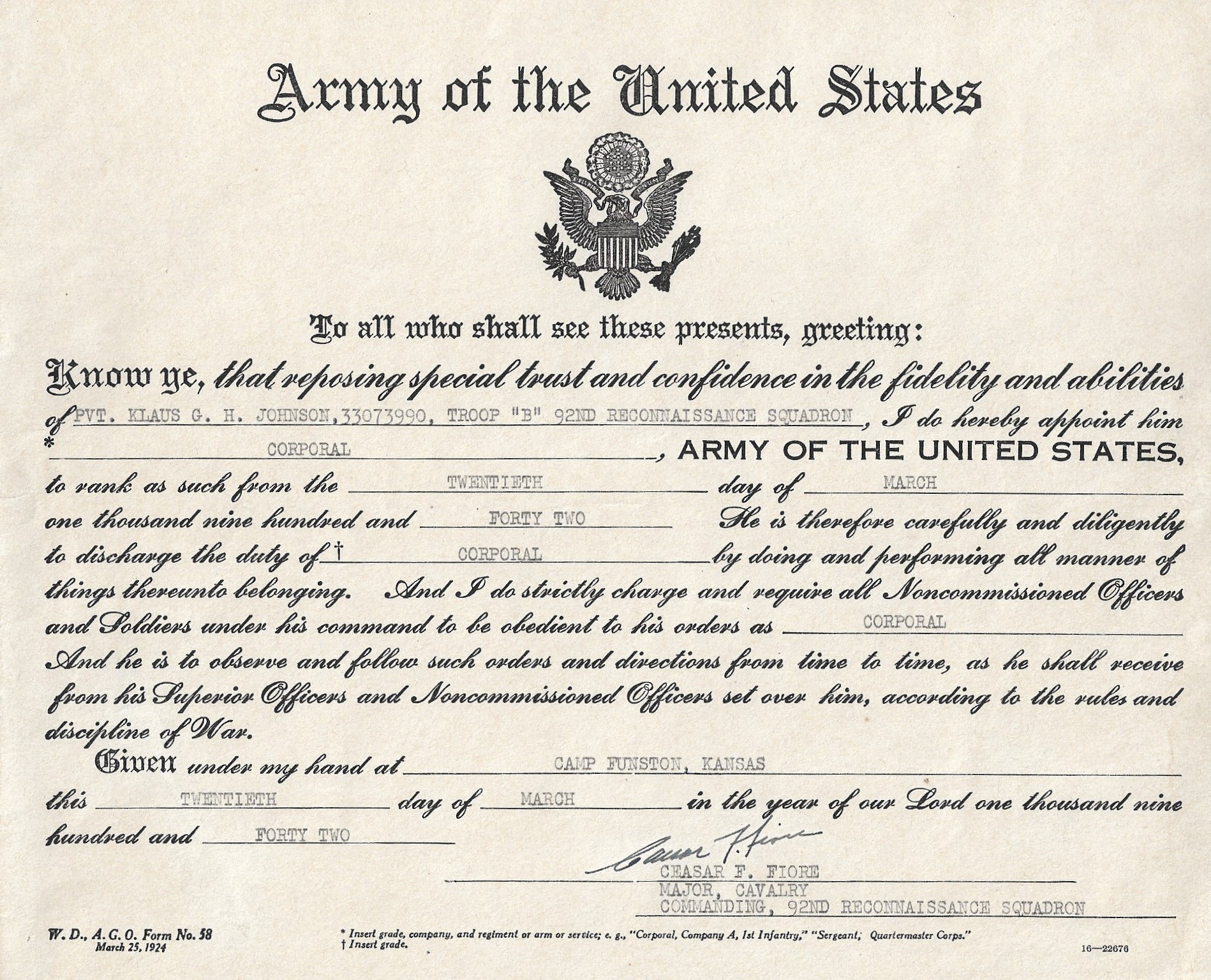
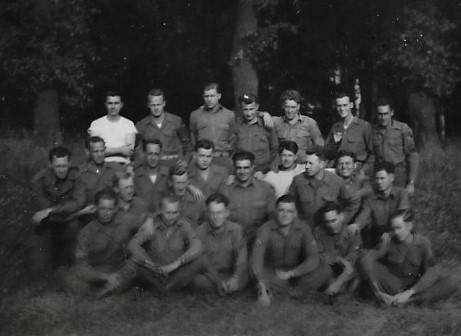
Headquarters Platoon

1st Platoon
Following successful participation in the Louisiana Maneuvers, the Squadron received orders to travel to New York for assignment to the European Theater of Operations, ETO. The men boarded the Queen Mary and arrived at Glasgow Scotland a few days later. They then boarded trains for South Hampton, England and prepared for the invasion of France. Upon arrival they were quickly put to work. Another member of E Troop, Bobby Cobb, reported the following as reported in:
“On arrival, “E” Troop by platoons were placed in tents with 12 cots for beds with a large coal-fired stove for heat. From here “E” Troop went north in England to a very large open field which us assault gun tankers were told to pick out our tank, clean the preservation coating from rust, fuel the tanks, with trailers, for the return trip to the area near South Hampton. That field was loaded, row after row, with our tanks as far as the eye could see.
On arrival, we loaded the tanks and trailers with fuel, ammunition, 75MM, 50 caliber machine- gun ammo and Army “C” rations for a week for a crew of 4, plus water cans. June 6th, 1944, “D” Day, headed for France – third wave. Landed 3 degrees off course – – landed at the point which divided Omaha and Utah beachheads.”
The 89th participated in the D-Day landings on Normandy, fought through France and onto the German border near the Maginot Line. When the German offensive, Operation WACHT AM RHEIN began on 16 December 1944, the 89th was on the front lines in Luxembourg and helped to stem the German advance into Belgium. They fought in many of the towns of eastern Belgium and Luxembourg during that battle. The Squadron participated in the attack on Cologne and was present when the Allies siezed the Ludendorf Bridge over the Rhine River. They 89th attacked into Germany, through the Fatherland and fought a major battle for the city of Leipzig. The unit then headed for Prague, Czechoslovakia arriving at war's end. They returned to Germany in occupation of the town of Bayreuth.
At the end of the war, Easy Troop had the following officers in command with their “call sign” as indicated:
E Troop CO Capt Freeman "Butch"
Exec Officer 1st Lt Learned "Scotty"
1st Platoon Ldr 1st Lt Campbell "Soup"
2nd Platoon Ldr 1st Lt LaVangie "Yank"
3rd Platoon Ldr 1st Lt Lyon "Junior"
4th Platoon Ldr 1st Lt Learned "Scotty"
3rd Platoon was initially commanded by Lieutenant MacDonald until 13 February when he transferred to Baker Troop. His replacement, Lieutenant Philip A. Lyons did not arrive to the platoon until February 23. Upon his arrival, Lt Learned, the Executive Officer and 4th Platoon Leader accompanied Lt. Lyons to familiarize him with the the Assault Gun platform and to teach him how to lay the platoon for indirect fire. He remained with him for 3 days to complete familiarization.
Here are some excerpts from the 89th Squadron's Combat Journal
For April 1945:
The continued disorganized, ineffective end resistance by small, isolated and unsupported groups of fanatics of nazism, that characterized the later part of the previous period was true of this period until the final objective (KULDER) was reached E of LEIPZIG and W and S of GRIMA. Bn grps and patrols that had been over-run or by-passed made the area haardous for com and supply behind the division units.
Weather during the period was generally cool and clear, with occasional light spring showers. Roads were dusty and location of units was evident by dust clouds much as in the desert. At no time did mud become an element to contend with in operation.
Unit mission remained the same as in the previous period with troops operating with Command Commands heading their advance by reconnoitering routes, reducing small resistance, performing liaison between adjacent task forces, or parallel Combat Commands. Sq Hq & Ser Trp, Hq E Trp, Hq F Co, and D Trp, marched with Div Troops during the period as a local security element. Outposting towns for the purpose of security, to screen travellers, and to prevent civilian movement was normal procedure. One troop (D) was used to relay info to Div from Ccs, and to provide route recon for movement of Div elm. Also security was furnished for captured airfield BAARDIS in vic POLENZ, and captured ammo dump vic ETZOLDSHAIN (446960_ at end of period. Later part of period 16 armored cars were xchanged for used light tanks, tanks distributed to each troops.
Result of operations for this period was to march approx 250 mi dist into Germany, continuing operation of the previous period. Proceed from BREUNA (008140) at beginning of period to vic (WARBURG (9822) to LUCNA (215880) to vic GRIMA and returned to JENA during period. Movement was controlled by reaching objective vic WARBURG approx 02 April, movement to new objective and there to res vic JENA at end of period.
The following paragraphs provide a bit of insight into the combat activities of some of the squadron's units. These comments are as reported with no changes to the entries.
On 11 April 1945:
Fox Troop reported the following: 1/Plat mission screen L flank CCB. Moved to hill above STOCKHAUSEN (D1714) at 0600. Fired 5 rnds into end of shelter while waiting for roadblock to be cleared. Moved N through woods moving and bypassing rdblocks which were not def to HAMMA (D191) AUSLEBEN (D2219) BUARA (D2517) BEDELEBEN (D2713) ROTTLEBEN (D3012), BADFRANKENHAUSEN (D3412) UNDERLEBEN (D3814). Arrived in billets 0300, dptd 0500, delay due to dark night, drivers sleeping and losing clm and losing route several times. 2 Plt contd mission. Handled Pws. Did no firing. Arvd at OBRMOLLEN (WJ7592). Plat lost 1 M-8 AG to panzerfaust fire, losses to en 1 AT gun, 1 armd car, 2 MGs and unknown number of en armed with panzerfausts. Trp clsd in KANNAWAR (D369024) at 1145. 4/Plat moved out at 0800 enroute NIEDERBOSA (278025) 22 mi and clsd there at 2045.
On 12 Apri 1945:
Easy Troop reported the following: Capt 6 PWs at (5514) Waffen SS vehs and gas dump in woods not def. Approx 500 vehs of all descriptions. Plat Sgt killed 3 en at (D5714) with .50 cal fire which exploded gas drums which they were hidden behind. Helped destroy or disable some vehs parked in the woods. Both M-8s had to stop in the woods to repair tracks. Duckbills which are left caused tracks to twist and bend track guides and break connectors. We have had a great deal of trouble with tracks since the duckbills were put on. Most have been broken off now but bogies and tracks are in poor condition as a result.
The series of images provided show members of most of the platoons from Easy Troop, 89th Cavalry Reconnaissance Squadron. It is fortunate that the originator of the images, Klaus Johnson, took a picture of one of the Platoon Leaders, Lt. Lyons. Most of the platoon group photos do not include the officers for unknown reasons, but the photo of 3rd Platoon clearly shows an officer, Lt. Lyons, with the crossed sabres of the cavalry branch as depicted in the image of him.
The photos also show the M-8 Howitzer with its 75mm assault gun and the ring mounted .50 caliber machine gun which was so effective against infantry targets and light skinned vehicles. The 75mm was used with effect in busing bunkers and defensive positions and providing organic on-call indirect fire support for the scouts who were almost always in direct contact with enemy elements.
At some point members of Easy Troop scrounged a few Nazi flags and banners and posed for pictures with members of their platoon or crew. These images are a great reminder of the ultimate victory of the Allies over Nazi Germany.
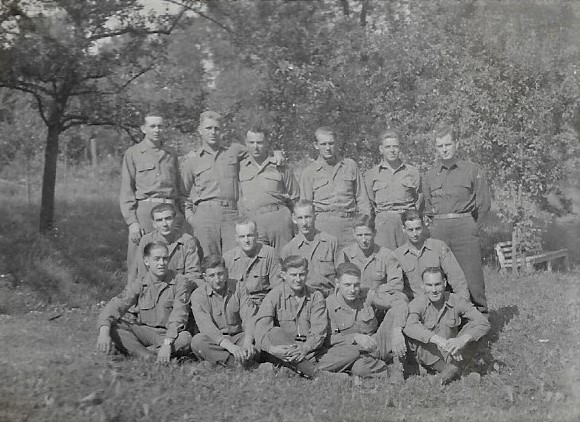
2nd Platoon
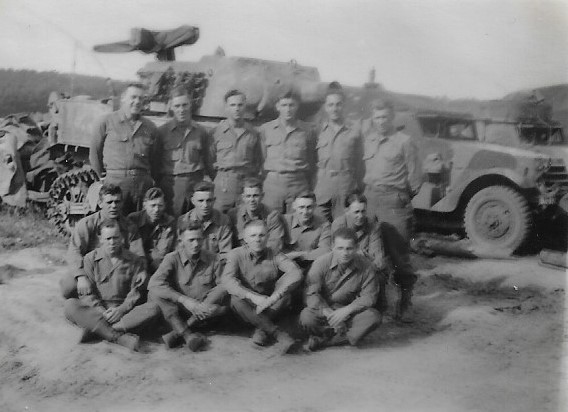
4th Platoon
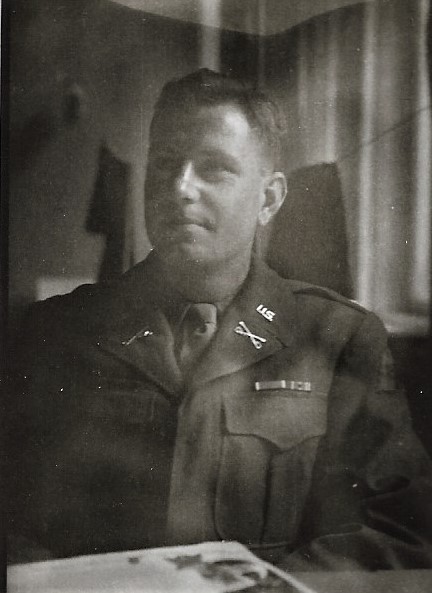
Lt. Philip A. Lyons
